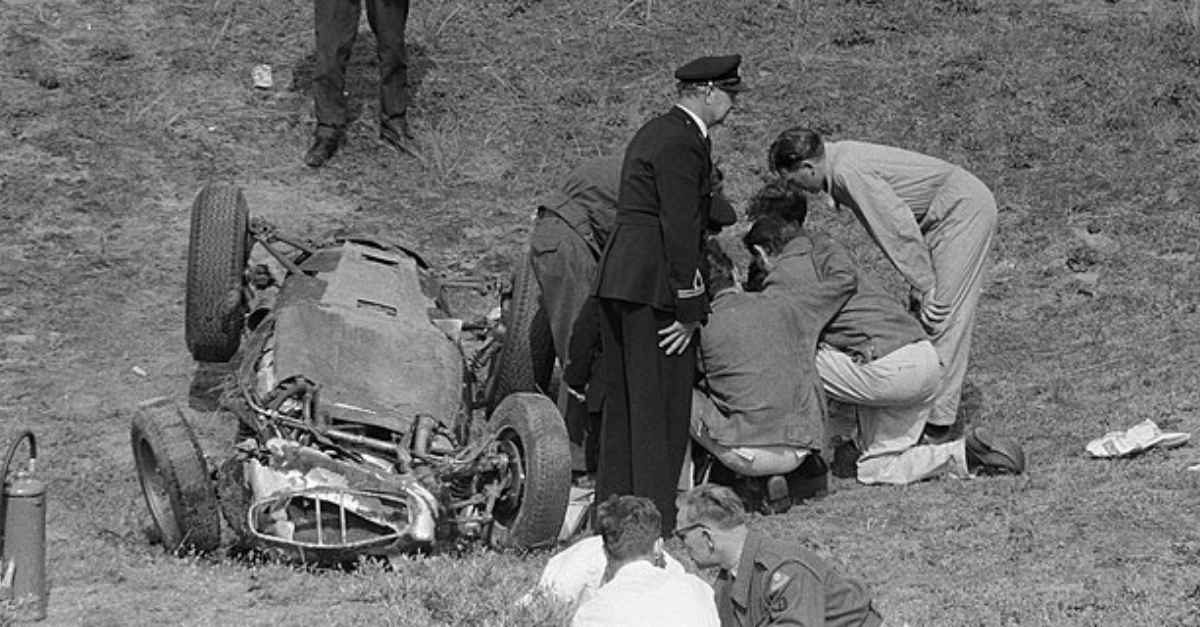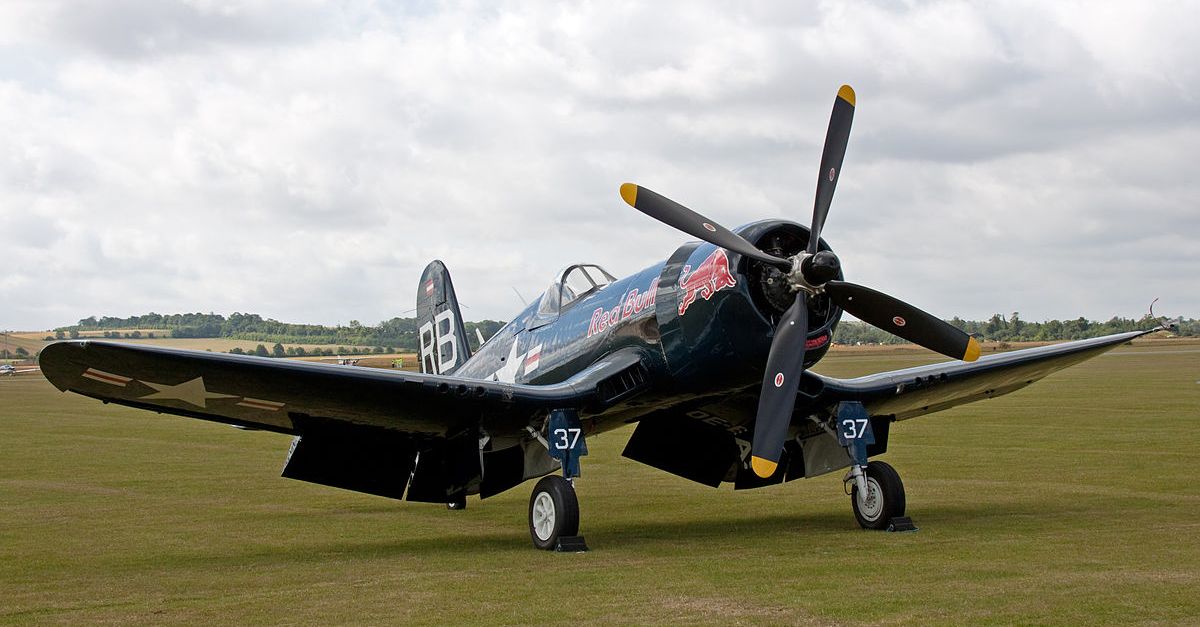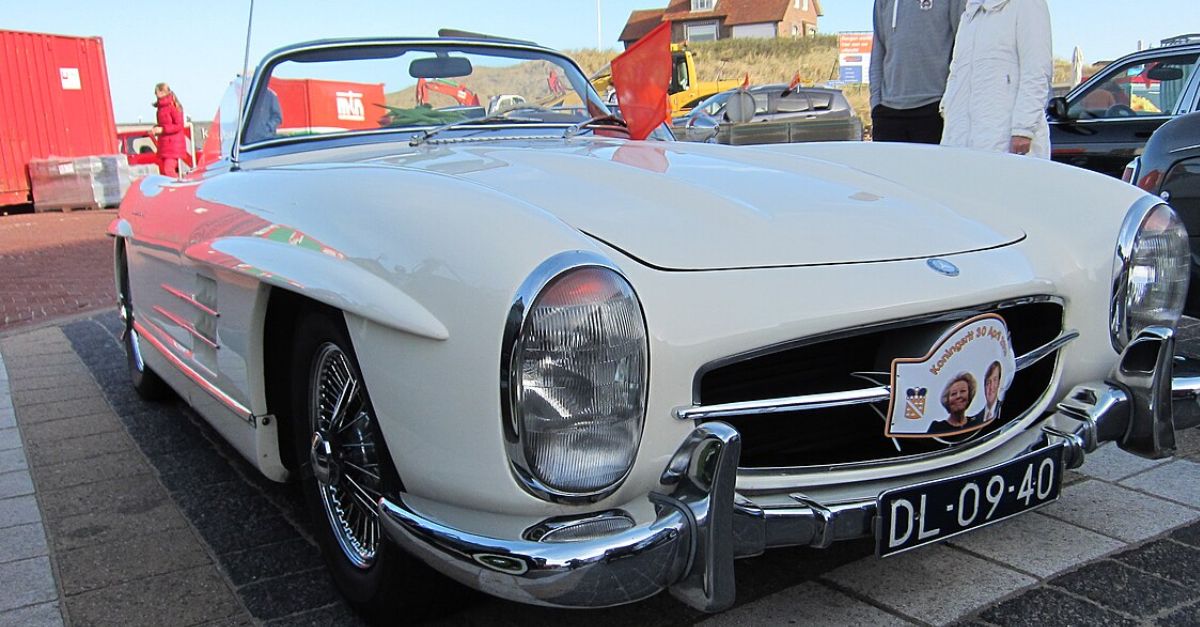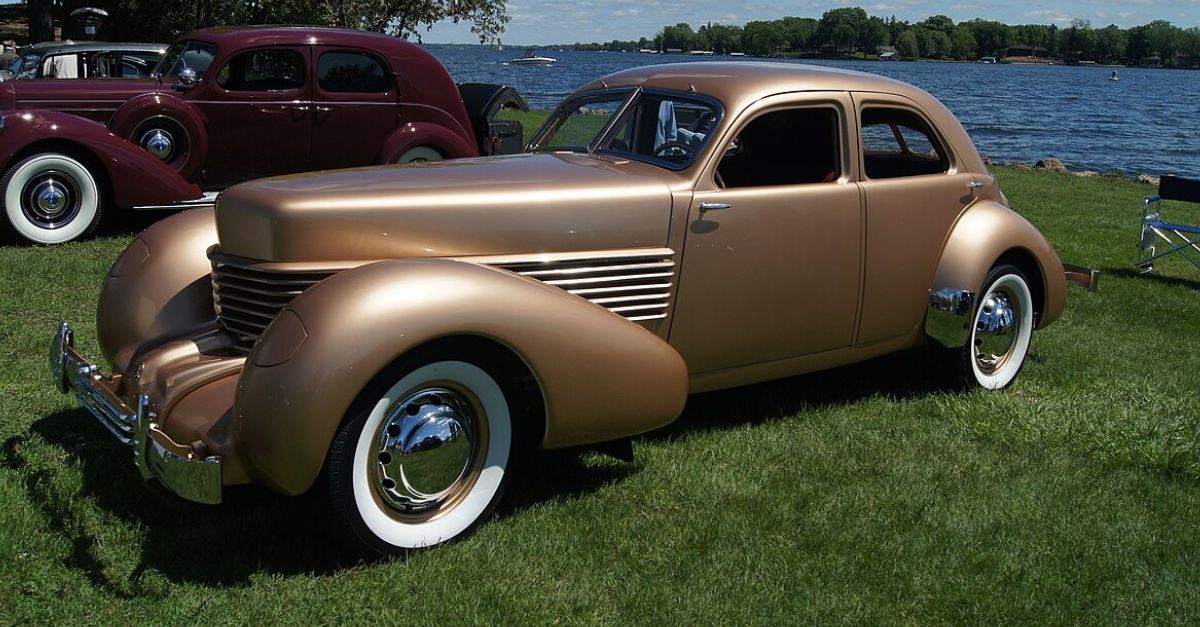The Best Of Two Bitter Rivals
Lamborghini and Ferrari have been trying to out-car each other since the early 1960s when Lamborghini introduced his grand touring car to answer Ferrari's dominance of the Italian motorsport scene and road car platforms. Let's explore the greatest cars from two bitter rivals.
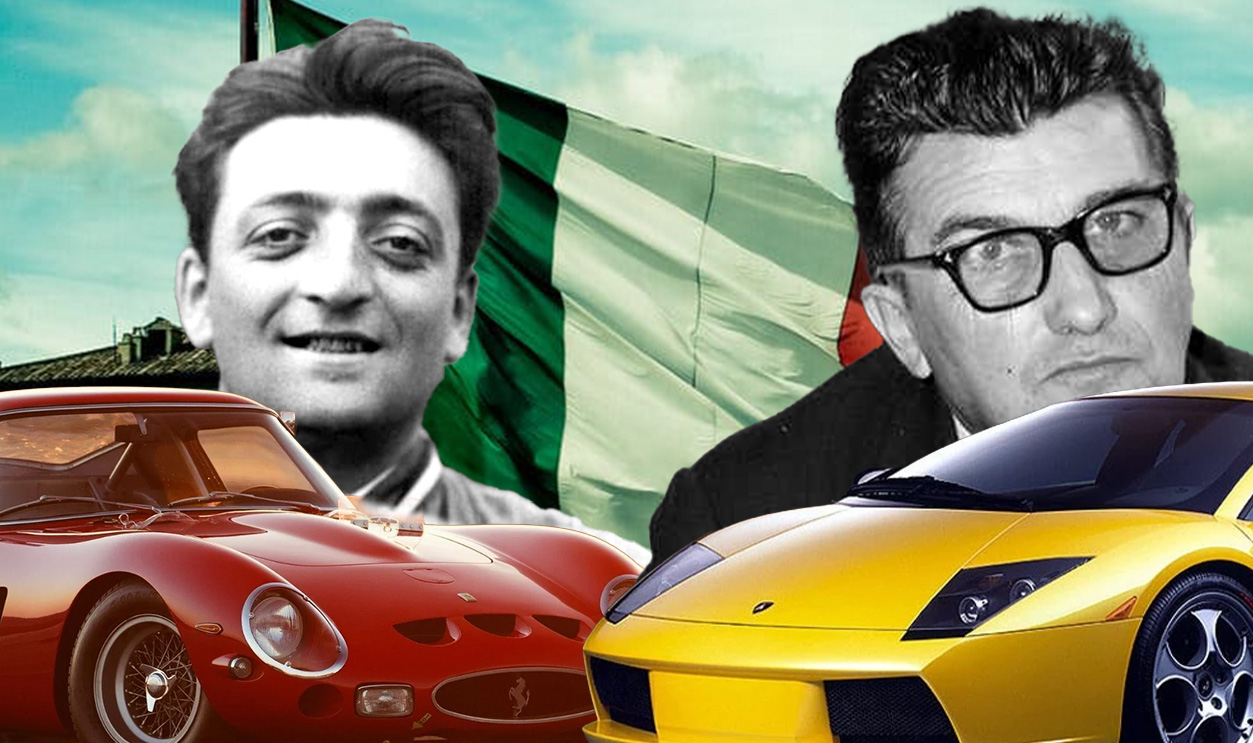
The Best Of The 1960s
The 1960s saw the explosion of Ferrari in Formula One, achieving motoring supremacy on the track, while steadily building a road car division. Meanwhile, Ferruccio Lamborghini, who'd only opened up shop in 1963, was building a name for himself in the high-performance world, thanks to the Lamborghini Miura.
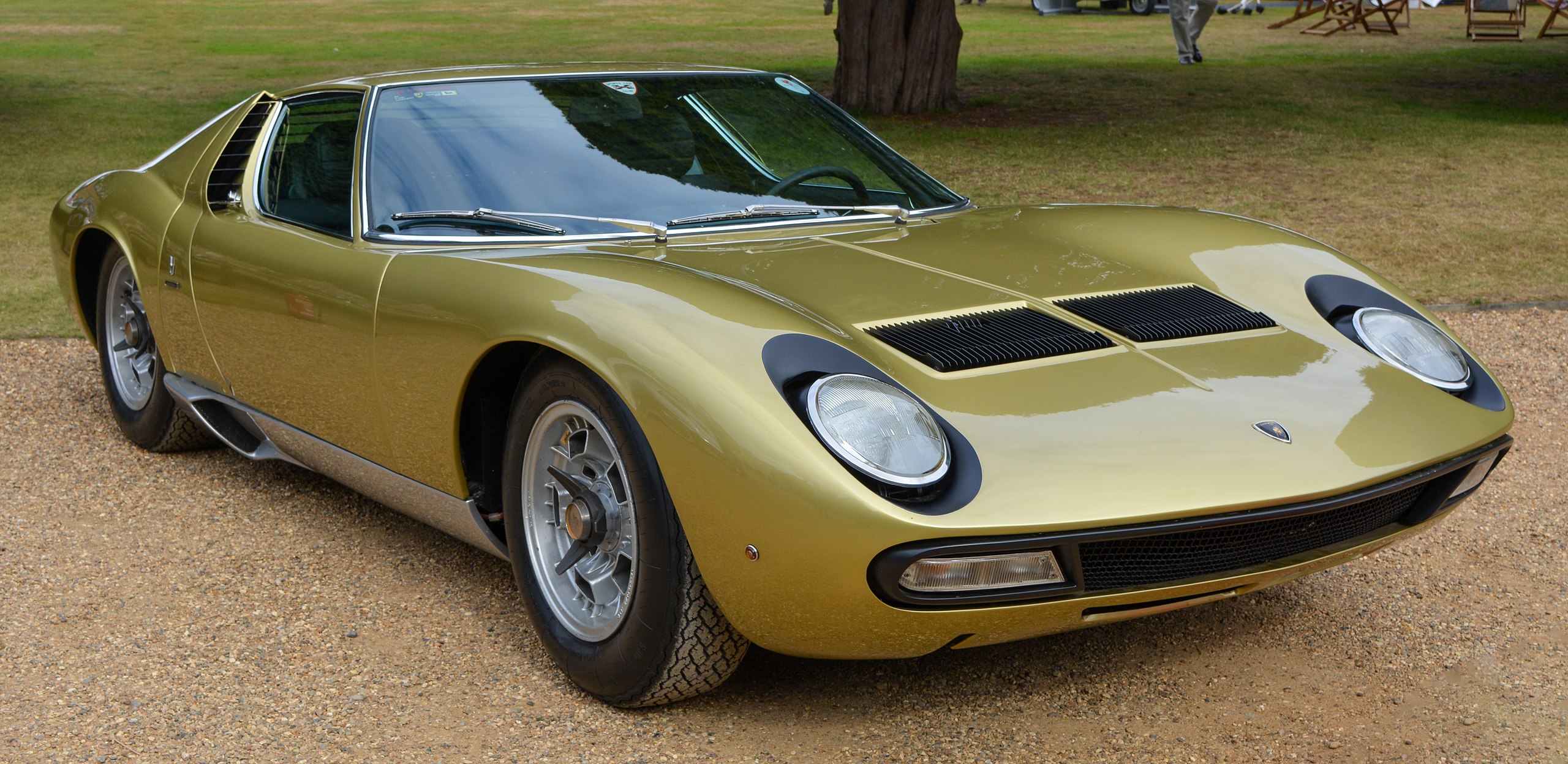 Chelsea Jay, CC BY-SA 4.0, Wikimedia Commons
Chelsea Jay, CC BY-SA 4.0, Wikimedia Commons
1969 Ferrari Dino 246 GT
You'll have to forgive the fact that this is a 1969 model. It's named after Ferrari's son Dino, who tragically passed away from muscular dystrophy in 1956 at the age of 24. Coming in at the tail-end of the 1960s, the Ferrari Dino 246 GT featured a 2.4L V6 engine that produced 146 hp and went from 0 to 60 in 5.5 seconds. Its top speed? 148 mph—faster than the 1970 Porsche 911.
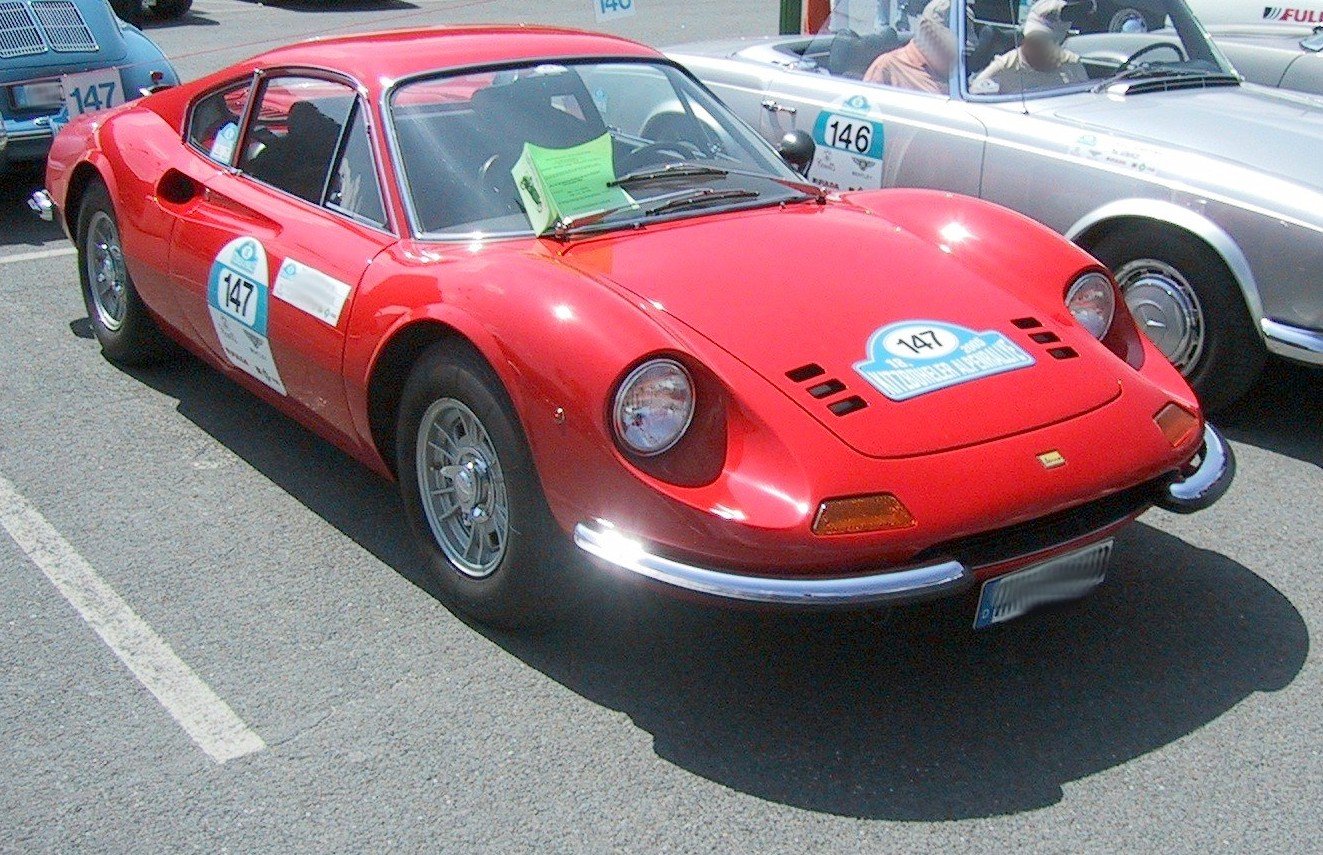 Chris 73, CC BY-SA 3.0, Wikimedia Commons
Chris 73, CC BY-SA 3.0, Wikimedia Commons
1967 Lamborghini Miura
The supercar that put Lamborghini on the map: the 1967 Lamborghini Miura. Two years before Ferrari released the Dino 246, Lamborghini had put out a low-profile supercar with retractable headlights. Under the hood, it packed a punch with a 3.9L V12 engine that produced a massive (for 1967) 350 hp and gave the Miura a top speed of 171 mph. It was and remains an engineering marvel.
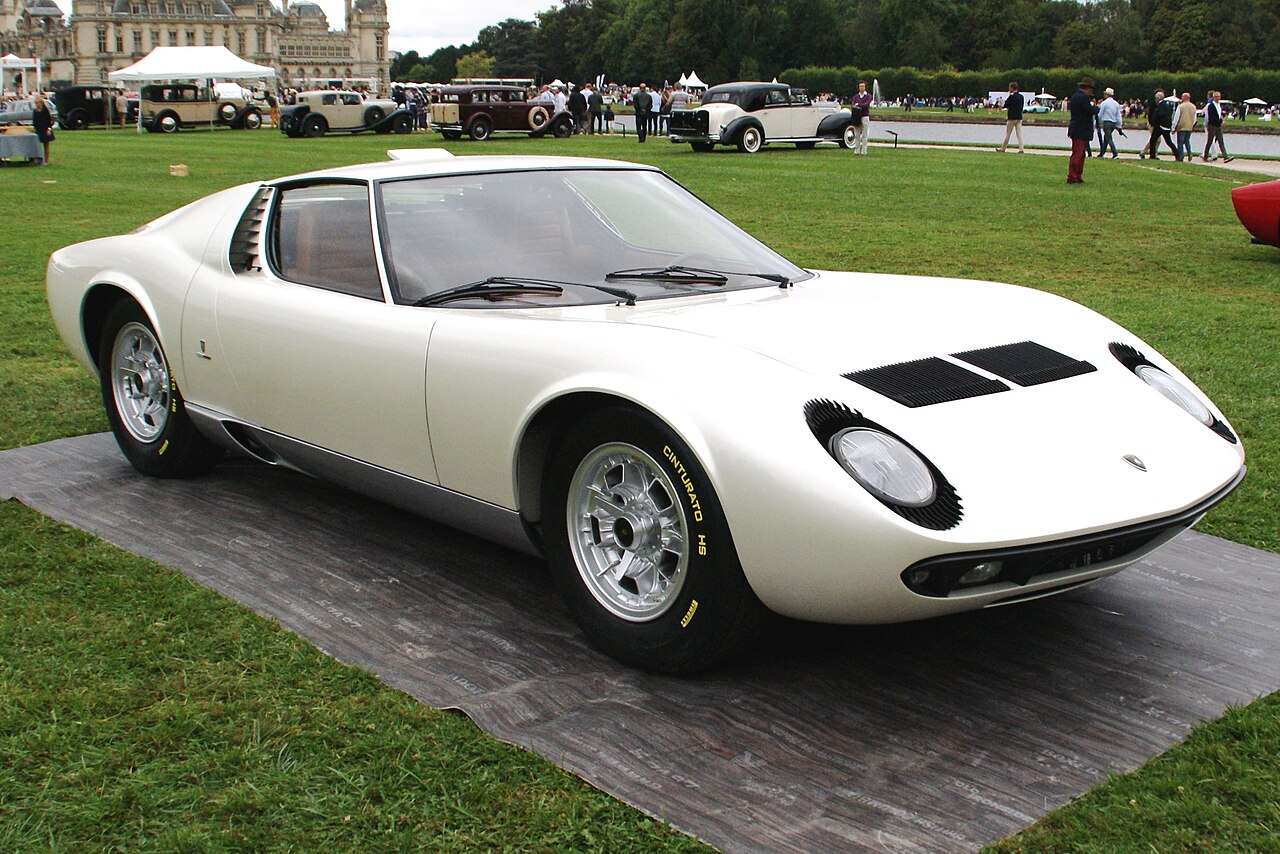 Eric Manesse, CC BY-SA 4.0, Wikimedia Commons
Eric Manesse, CC BY-SA 4.0, Wikimedia Commons
1963 Ferrari 250 LM
The "LM" at the end of this 1963 Ferrari 250 stood for "Le Mans", harkening back to the 1965 win at Le Mans. Unfortunately for Ferrari, despite the importance of the 250 LM, it didn't meet homologation requirements, as Ferrari hadn't made 100 units of the 250 LM—instead, only 32 were made between 1963 and 1966. Still, at least they tasted Le Mans victory with the legendary car.
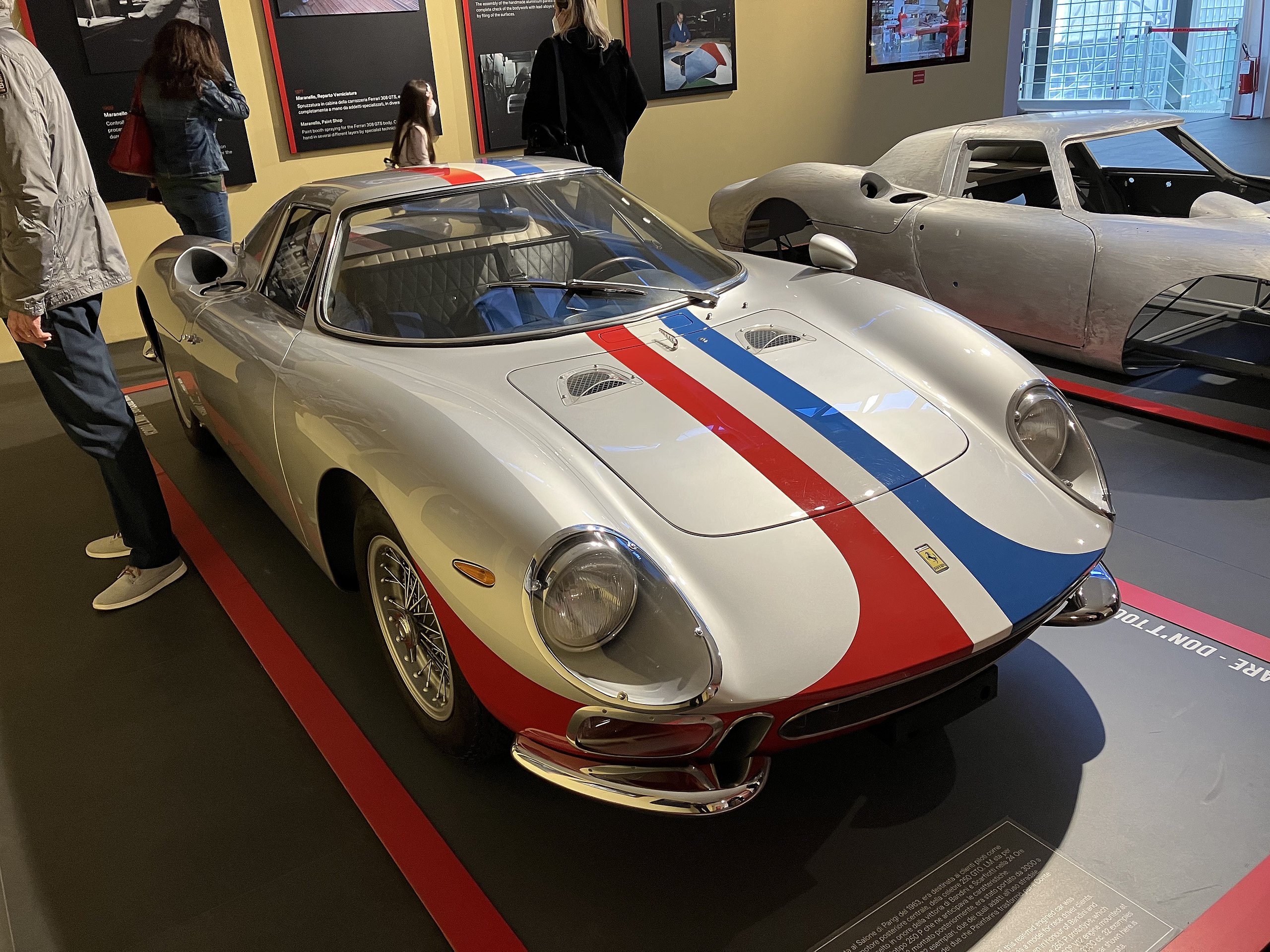 pelican-actor, CC BY 2.0, Wikimedia Commons
pelican-actor, CC BY 2.0, Wikimedia Commons
1963 Lamborghini 350 GT
We're not sure whether this directly qualifies as being one of the greatest Lamborghinis ever, but it was their very first car. Equipped with a 3.5L V12 engine, producing 280 hp and a top speed of 158 mph, the success of the 350 GT helped keep Lamborghini afloat as a company.
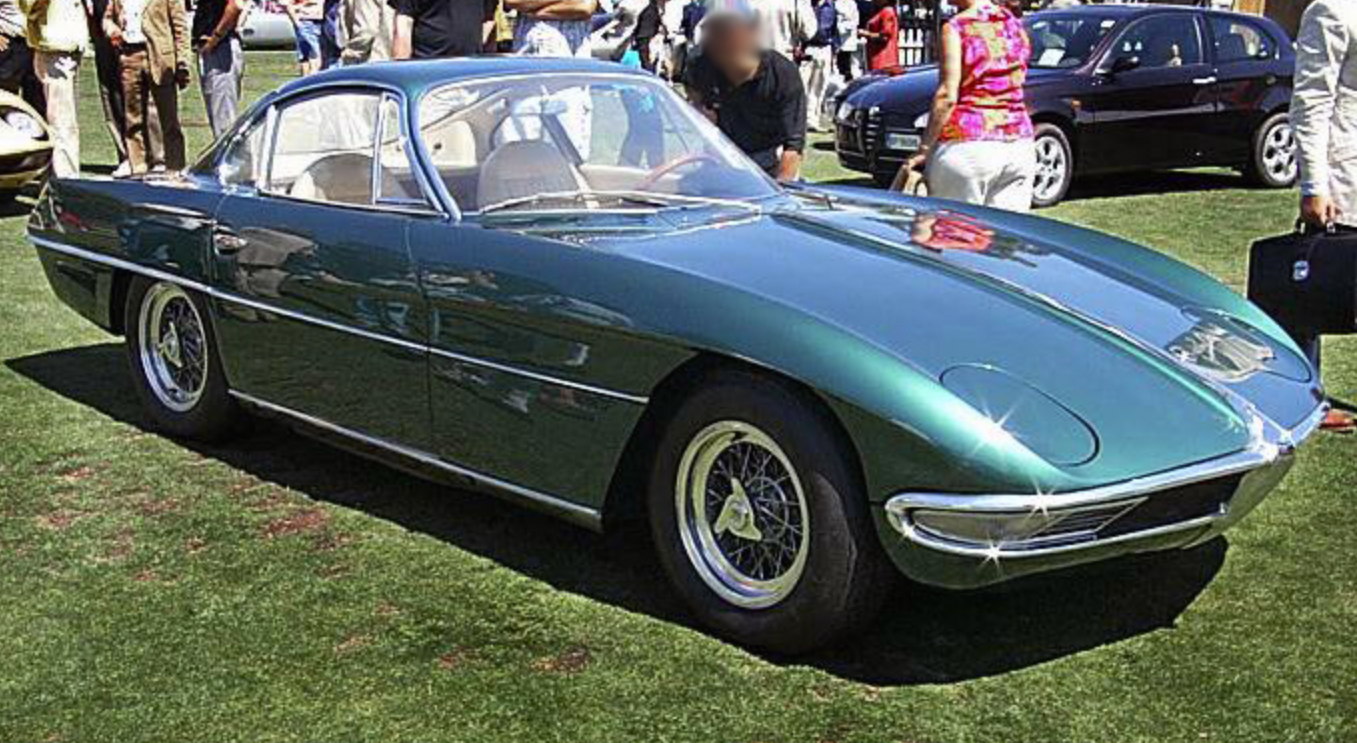 Craig Howell, CC BY 2.0 Wikimedia Commons
Craig Howell, CC BY 2.0 Wikimedia Commons
1966 Lamborghini 400 GT
An updated version of the 350 GT was released in 1966, complete with a larger body that allowed for two people to sit in the back. This was a vast improvement on the 350, which only allowed for a single person behind the driver and passenger. Performance-wise, it was powered by a 3.9L V12 that produced 320 hp.
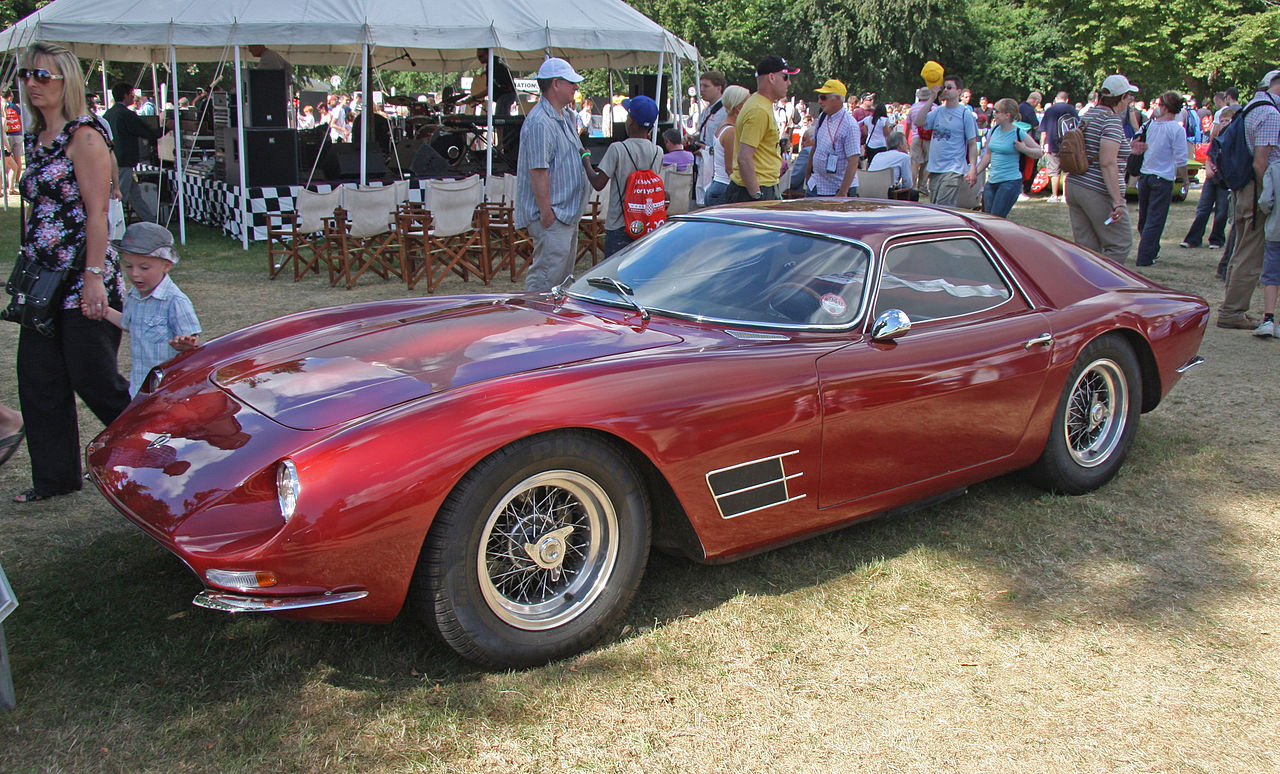 Brian Snelson, CC BY 2.0, Wikimedia Commons
Brian Snelson, CC BY 2.0, Wikimedia Commons
The Best Of The 1970s
By the 1970s, Ferrrari S.p.A had entered its golden age of both racing and road car production. It won seven cumulative Constructor's and Driver's Championships in F1 and produced some of the most powerful road cars ever built during this decade. Let's go over some of the greatest from two Italian giants in a decade of firsts.
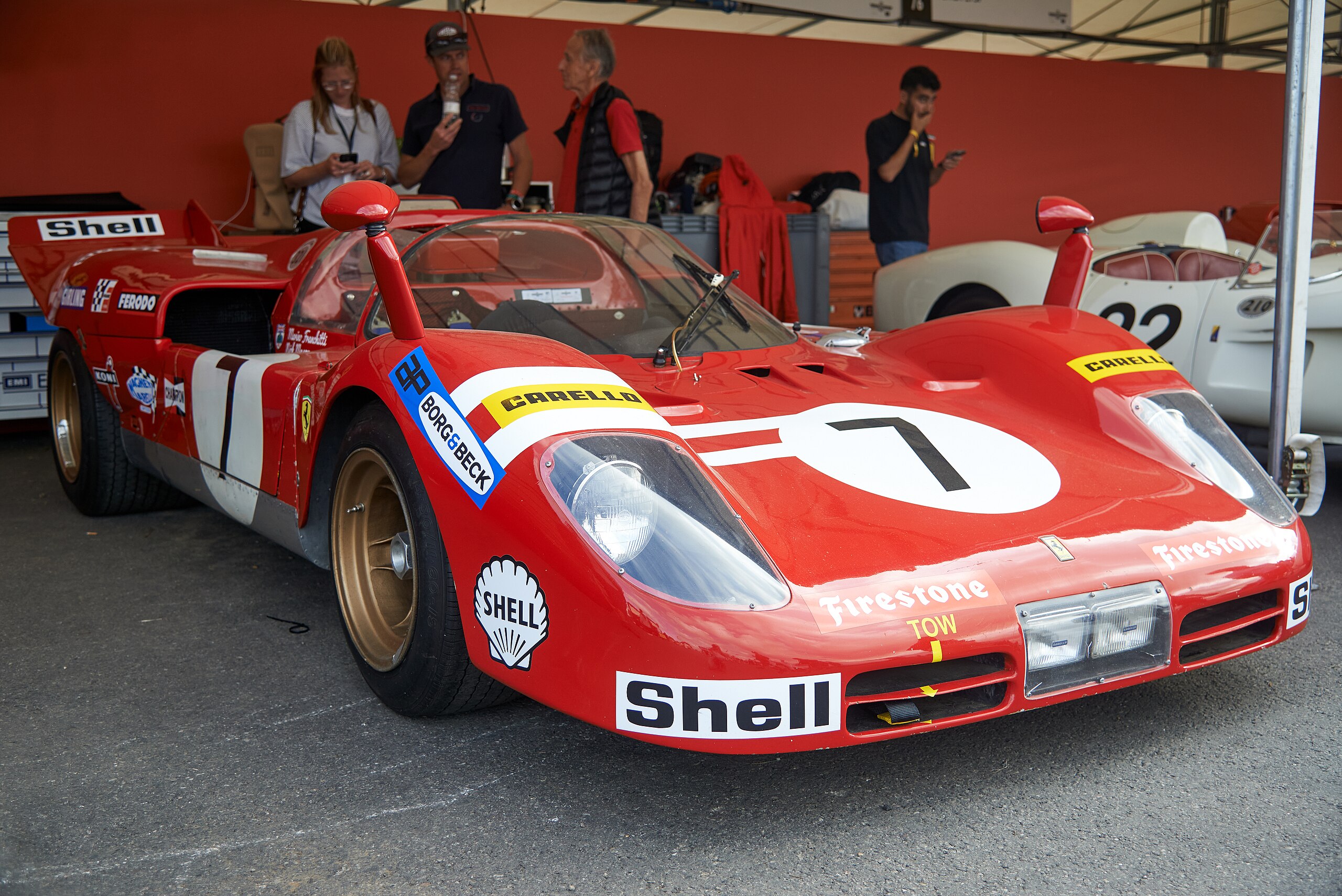 Andrew Basterfield, CC BY-SA 2.0, Wikimedia Commons
Andrew Basterfield, CC BY-SA 2.0, Wikimedia Commons
1974 Lamborghini Countach
Production of one of the greatest supercars ever began in 1974 and continued for 16 years. Of course, we're talking about the Lamborghini Countach. Only 1,189 units were produced, with the original model coming with a 4.0L V12 engine that produced 450 hp and a top speed of 186 mph. But it was the wedge shape of the Countach that would turn the most heads and send Ferrari scurrying back to their drawing board.
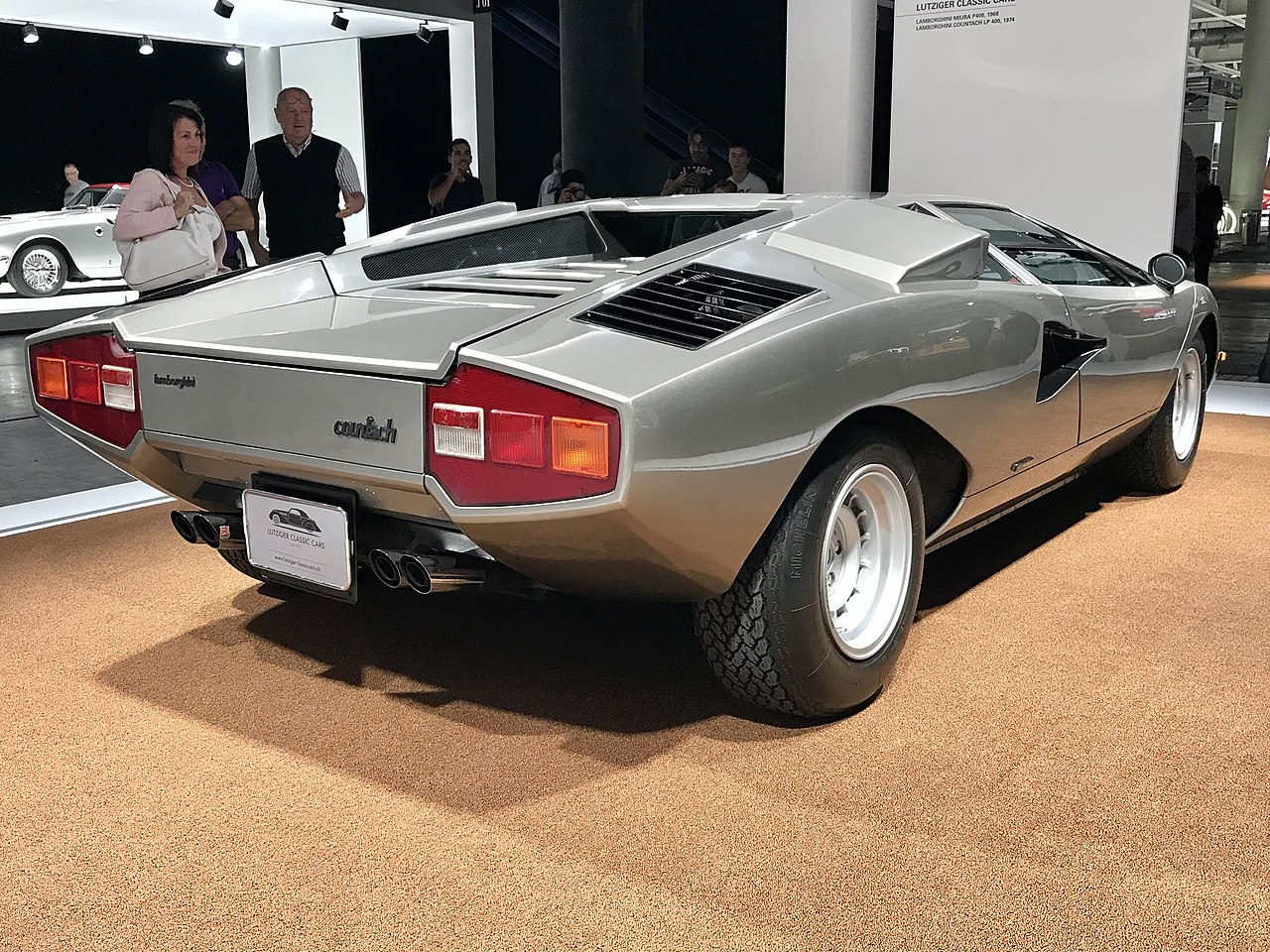 Ank Kumar, CC BY-SA 4.0, Wikimedia Commons
Ank Kumar, CC BY-SA 4.0, Wikimedia Commons
1973 Ferrari Berlinetta Boxer
The 1974 Berlinetta Boxer was originally dismissed out-of-hand by Enzo Ferrari because it was a mid-engine car that would be "too difficult for my buyers to handle". He eventually had to be persuaded by Pininfarina, especially after the Countach was released. The Boxer performed well against their rival, with a flat-12 engine that produced 375 hp and hit a top speed of 175 mph. The Berlinetta Boxer and Countach set the stage for supercar noses for the decade to come.
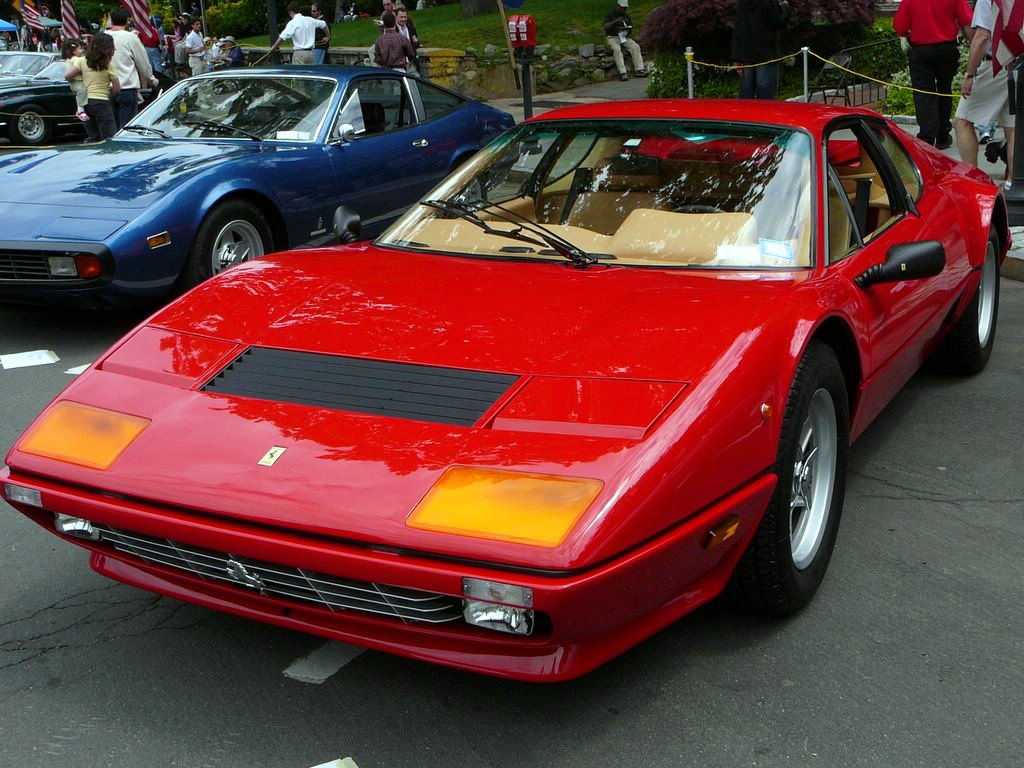 Brett Weinstein, CC BY-SA 3.0, Wikimedia Commons
Brett Weinstein, CC BY-SA 3.0, Wikimedia Commons
1971 Ferrari GTB/4 "Daytona"
Although the Italian company would never stoop so low as to use the American media's name given to the 1971 Ferrari GTB/4, the 1971 Ferrari GTB/4 is still one of the best cars of the 1970s. Only 1,406 were ever made from 1971 to 1973. Its "Daytona" came from a 1-2-3 podium finish at the 24 Hours Of Daytona race in 1967, usurping the American hegemony that had existed since the early days of Daytona. The Daytona had a top speed of 173 mph and could cover the quarter-mile in 3.8 seconds—a whole 0.7 seconds faster than the Miura.
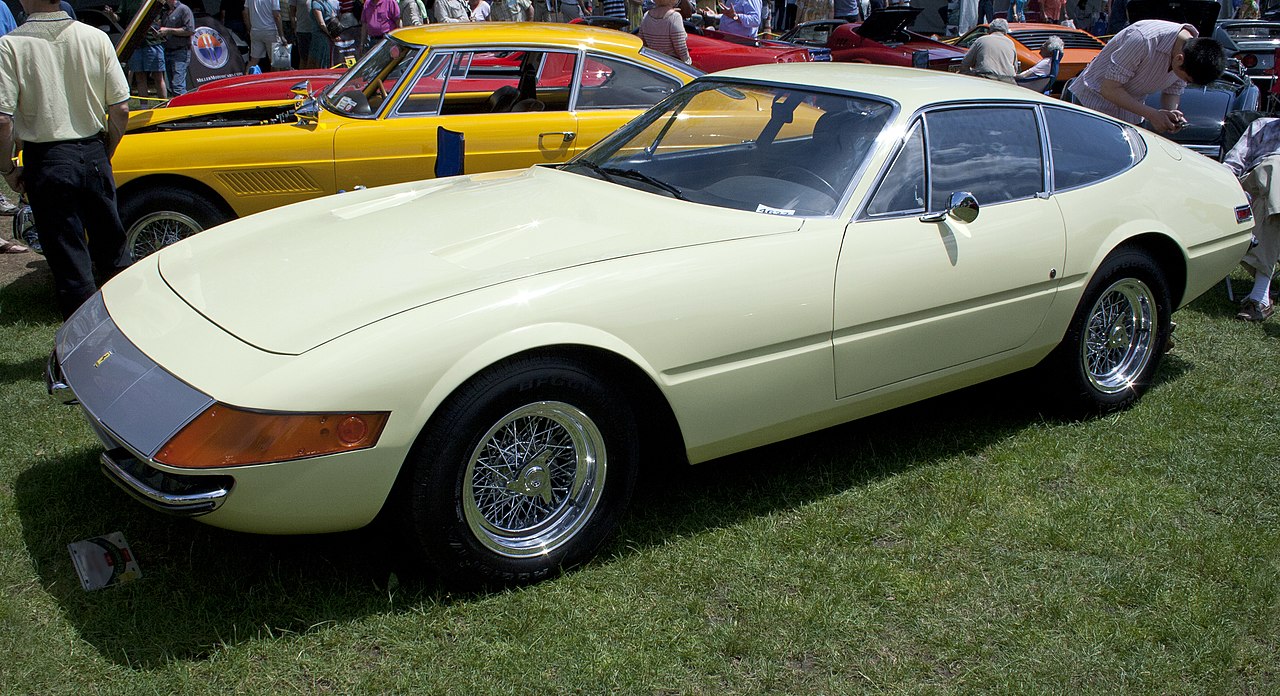 Mr.choppers, CC BY-SA 3.0, Wikimedia Commons
Mr.choppers, CC BY-SA 3.0, Wikimedia Commons
1970 Lamborghini Espada Coupé
Lamborghini kicked off the decade with a car named after a Matador's sword, the Espada Series II Coupé. Long in the front, more head-room in the driver and passenger's seats, and then shorter rear seats—it looked like a sword from the side. It dealt Ferrari a lethal blow at the start of the decade with a 4.0L four-cam V12 engine that screamed out 350 hp and delivered a stunning top speed of 155 mph. Electric windows and dual exhausts on both sides topped off this incredible coupé.
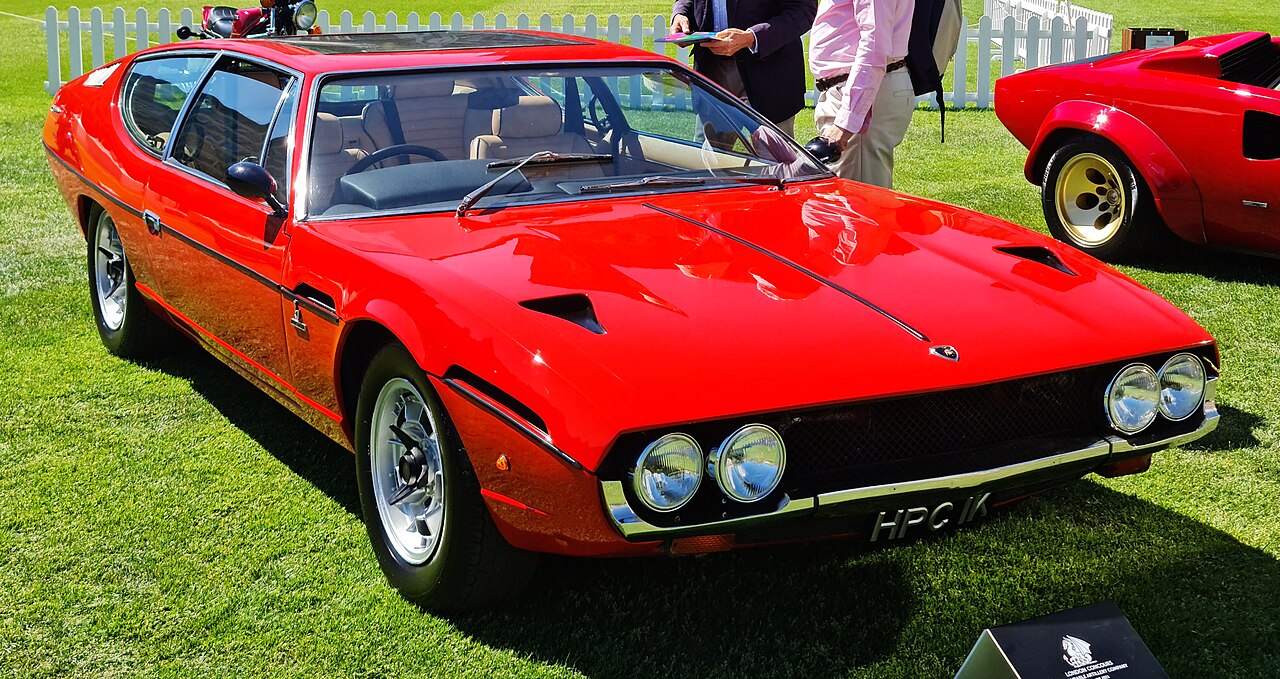 MrWalkr, CC BY-SA 4.0, Wikimedia Commons
MrWalkr, CC BY-SA 4.0, Wikimedia Commons
The Best Of The 1980s
With the rivalry between Ferrari and Lamborghini now in full-swing, the 1980s beckoned. Ferrari had its hands in both racing and road car production, meanwhile Ferruccio Lamborghini had made the decision to stick to designing and releasing stunning supercars fit for the road, rather than the racetrack.
 Mr.choppers, CC BY-SA 3.0, Wikimedia Commons
Mr.choppers, CC BY-SA 3.0, Wikimedia Commons
1985 Lamborghini Countach 5000S QV
Sticking with the Countach nameplate, because if it ain't broke, don't fix it, right? Lamborghini released the 5000S QV, or "Quattrovalvole", standing for the four valves that went with each cylinder of the massive V12 engine that roared out 620 hp and a bone-shattering top speed of 204 mph.
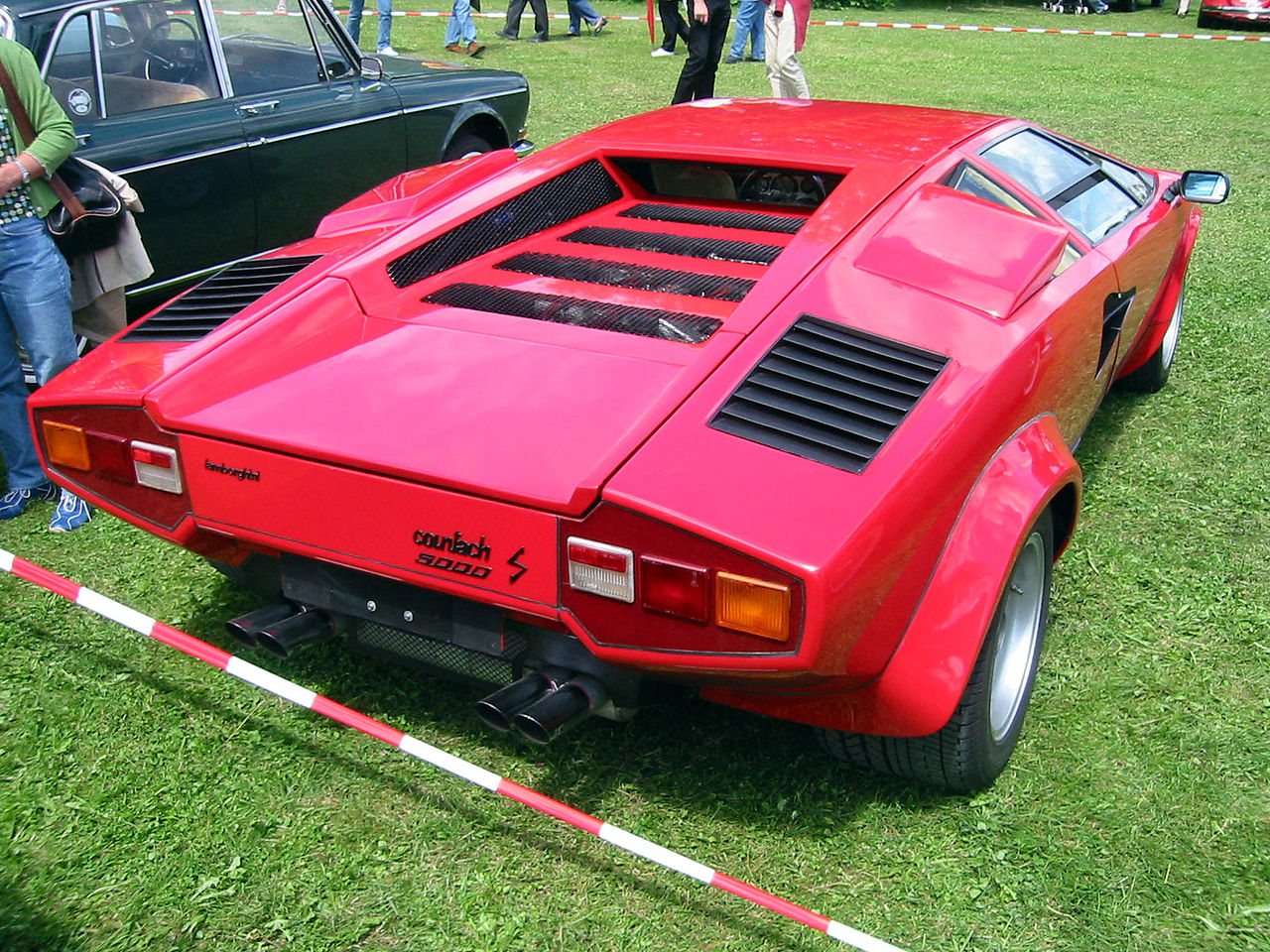 LSDSL, CC BY-SA 3.0, Wikimedia Commons
LSDSL, CC BY-SA 3.0, Wikimedia Commons
1987 Ferrari F40
Ferrari were definitely not trying to copy Lamborghini with the long-nosed, wide-spoiler F40. No, siree Bob and any accusation to the contrary is false. Maybe they were, who knows? But the 1987 Ferrari F40 was a cult classic of the 1980s. Powered by a twin-turbocharged 3.9L V8 engine that pushed 477 hp out of Ferrari's final forced induction engine until the 2014 California T model. The Sultan of Brunei ordered not one but seven of these beauties.
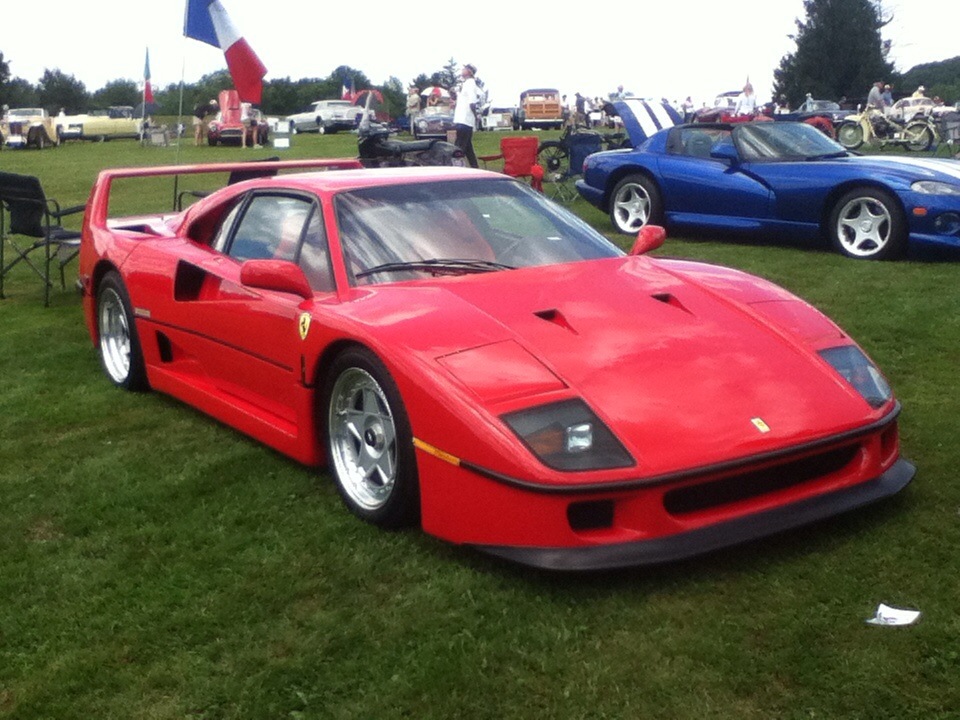 ilikewaffles11, CC BY 2.0, Wikimedia Commons
ilikewaffles11, CC BY 2.0, Wikimedia Commons
1986 Lamborghini LM002
Lamborghini broke the supercar mold and stunned rival Ferrari in 1986 when it introduced the LM002, an off-road vehicle: a first for Lamborghini. It's like they mounted a Countach V12 engine in the front of a Humvee. Powered by a 5.2L V12 engine, the Italian military were the first customers for this behemoth, then the public came knocking: Lamborghini sold 301 LM002s, including six for the American market. They have featured in movies like No Holds Barred (1989) and Fast And Furious (2009).
 Kieran White, CC BY 2.0, Wikimedia Commons
Kieran White, CC BY 2.0, Wikimedia Commons
1984 Ferrari Testarossa
You'll probably recognize the Ferrari Testarossa from shows like Miami Vice (1984), identified by its side strakes that helped expel air from where the radiators were located, the Testarossa is an 80s cultural icon. Ferrari produced almost 10,000 units of the Testarossa and its variants, all powered by a 4.9L V8 engine and a rear-mid engine design that helped distribute weight. Its top speed was 180 mph and it could hit 60 mph in 3.8 seconds.
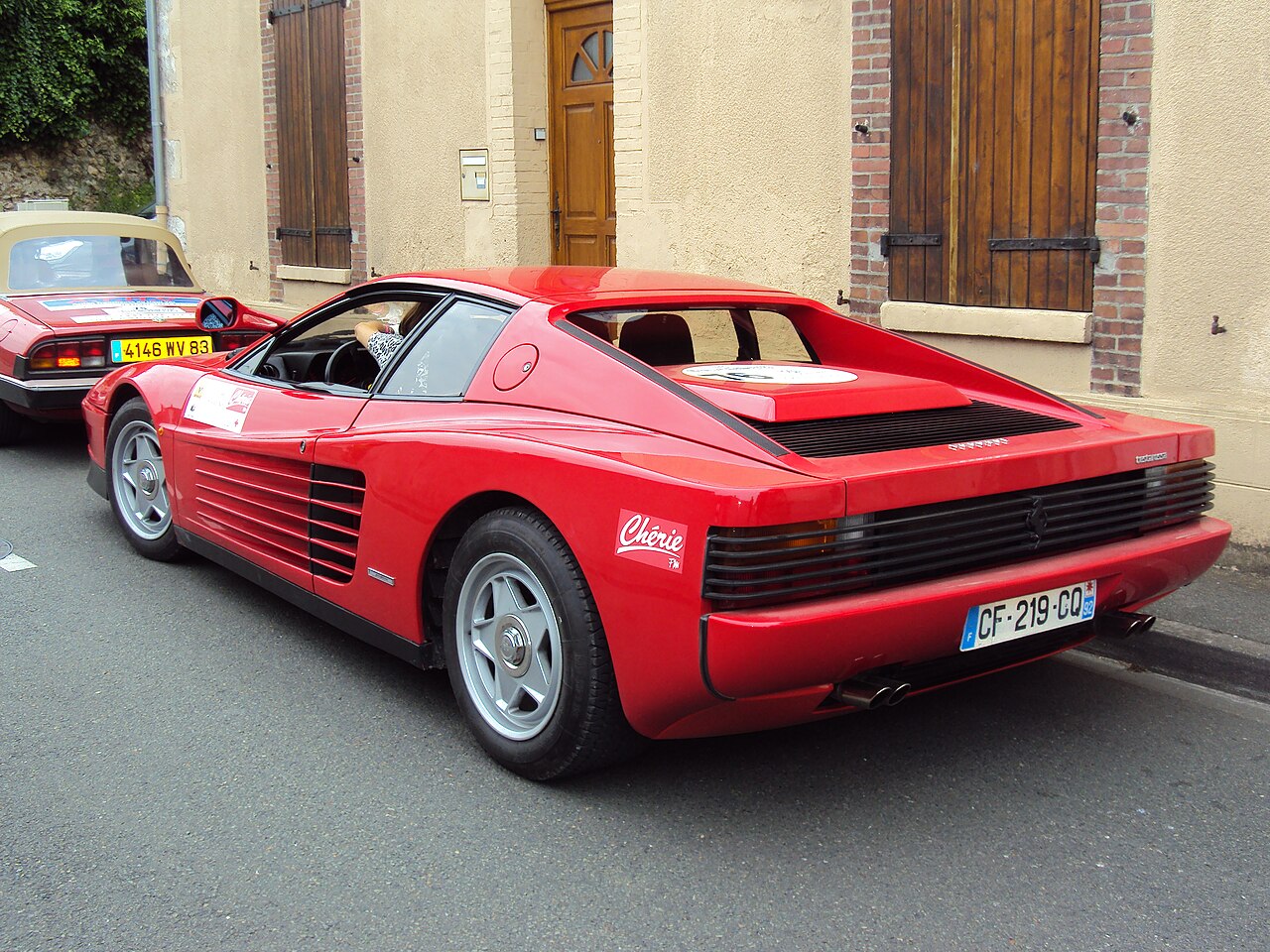 Blood Destructor, CC BY-SA 3.0, Wikimedia Commons
Blood Destructor, CC BY-SA 3.0, Wikimedia Commons
1981 Lamborghini Jalpa
The 1981 Lamborghini Jalpa is significant for two reasons: It was the most affordable Lamborghini of its day and it was the last Lamborghini to use a V8 engine until the Urus in 2018. The Jalpa was powered by a 3.5L V8 that produced 252 hp with a top speed of 155 mph. 410 units of the Jalpa sold between 1981 and 1988, making it the second-most successful Lamborghini at the time.
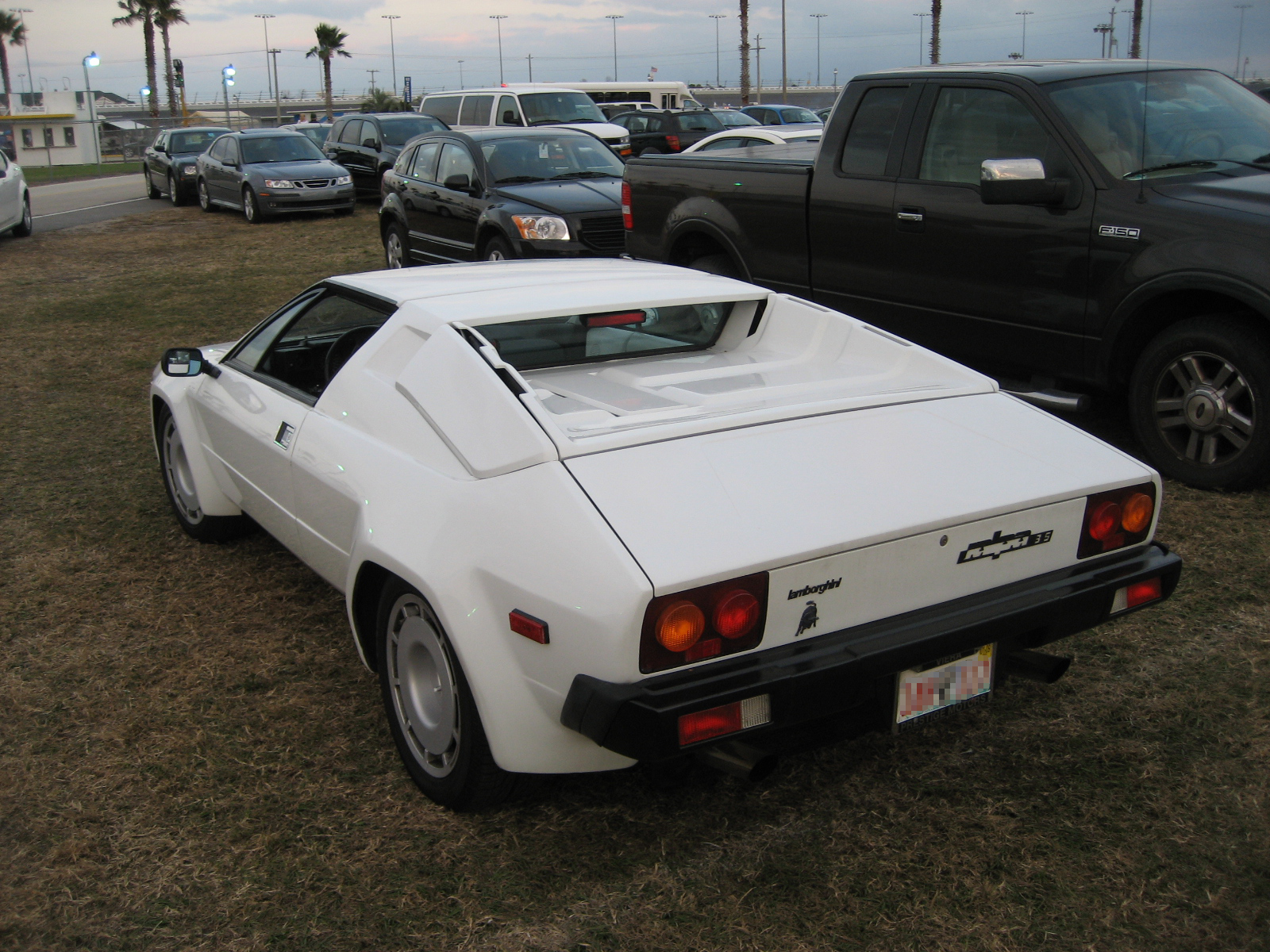 The359, CC BY-SA 4.0, Wikimedia Commons
The359, CC BY-SA 4.0, Wikimedia Commons
The Best Of The 1990s
The 1990s is where things start to get interesting for both Lamborghini and Ferrari. Lamborghini was undergoing an ownership crisis after taking a bashing from Ferrari in sales throughout the 1980s. The company was bought and sold numerous times throughout this decade. Ferrari, meanwhile, was undergoing something of a golden era in racing (thanks, Michael Schumacher) and its road division was chugging along smoothly.
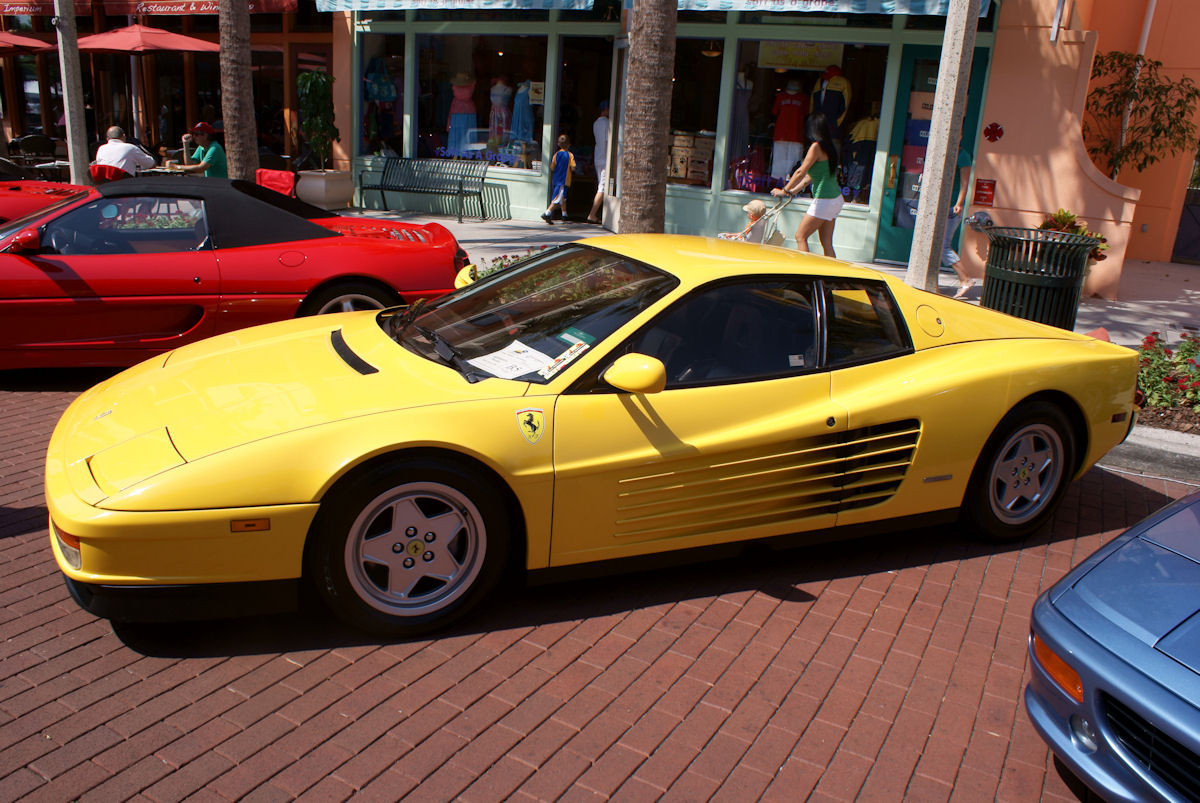 Valder137, CC BY 2.0, Wikimedia Commons
Valder137, CC BY 2.0, Wikimedia Commons
1990 Lamborghini Diablo
One of Lamborghini's few claims to fame throughout the 1990s: the Diablo, or "devil" in Spanish, was a rear-mid engine sports car that finally topped 200 mph, a landmark achievement for Lamborghini. Powered by a 5.7L Lamborghini V12 engine producing 485 hp, it could travel from 0 to 60 in 4.5 seconds and had a top speed of 202 mph. It helped bring Lamborghini back from the brink of a second bankruptcy.
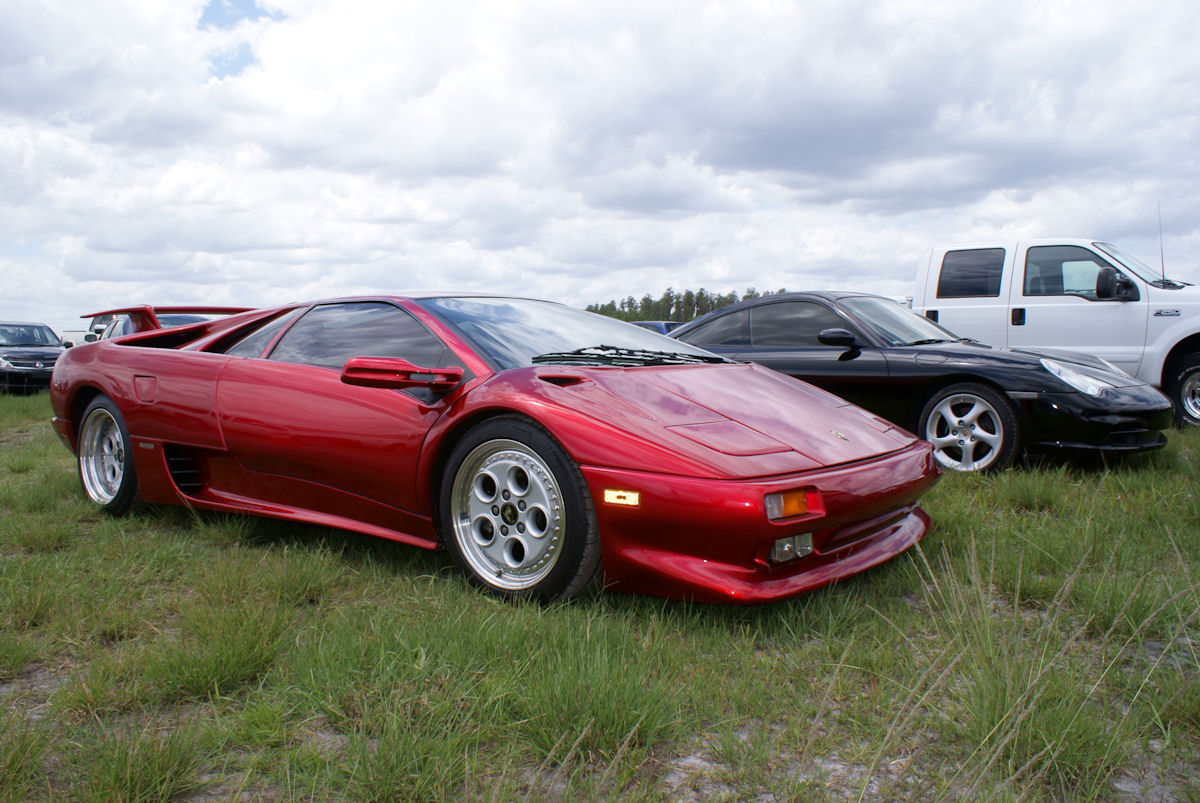 Valder137, CC BY 2.0, Wikimedia Commons
Valder137, CC BY 2.0, Wikimedia Commons
1994 Ferrari F355
In 1994, Ferrari released an updated version of their best-selling Testarossa. The V8 engine used in the Testarossa was upgraded from 3.4 to 3.5L, along with other performance upgrades, flip-up headlights, and a convertible (Spider) version made available in 1995. The F355 was one of the best-selling Ferraris of the decade.
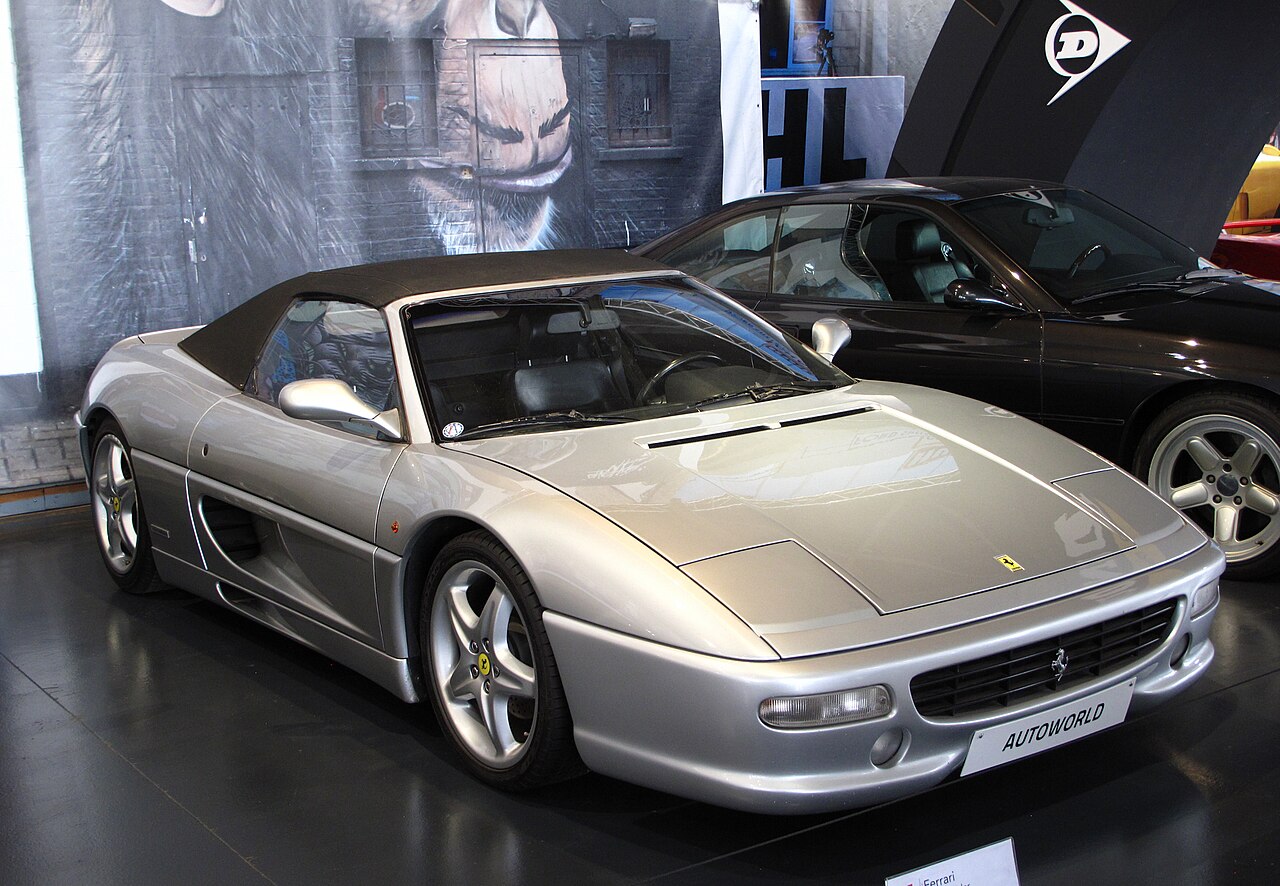 Rutger van der Maar, CC BY 2.0, Wikimedia Commons
Rutger van der Maar, CC BY 2.0, Wikimedia Commons
1995 Ferrari F50
The 1995 Ferrari F50, an upgrade to F40 of the 80s, saw a brand-new engine. It was a 4.7L naturally-aspirated V12 producing 512 hp, propelling the Ferrari to 60 mph in 3.8 seconds, and giving it an astonishing top speed of 202 mph.
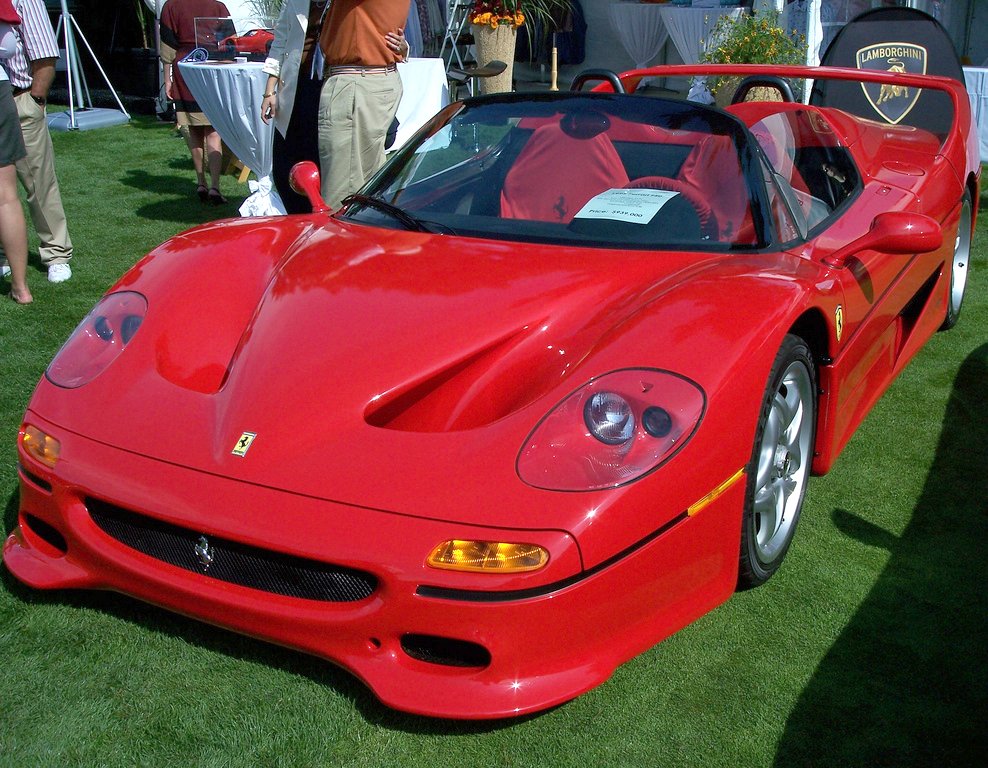 J.Smith831, CC BY 2.0, Wikimedia Commons
J.Smith831, CC BY 2.0, Wikimedia Commons
1995 Ferrari 550 Maranello
Ferrari waited 24 years to release a direct successor to the Ferrari Daytona that had served them so well at Le Mans. The 550 Maranello was their answer. It featured a completely new design that reinvigorated the mid-range Ferrari brand, providing fun and looks simultaneously.
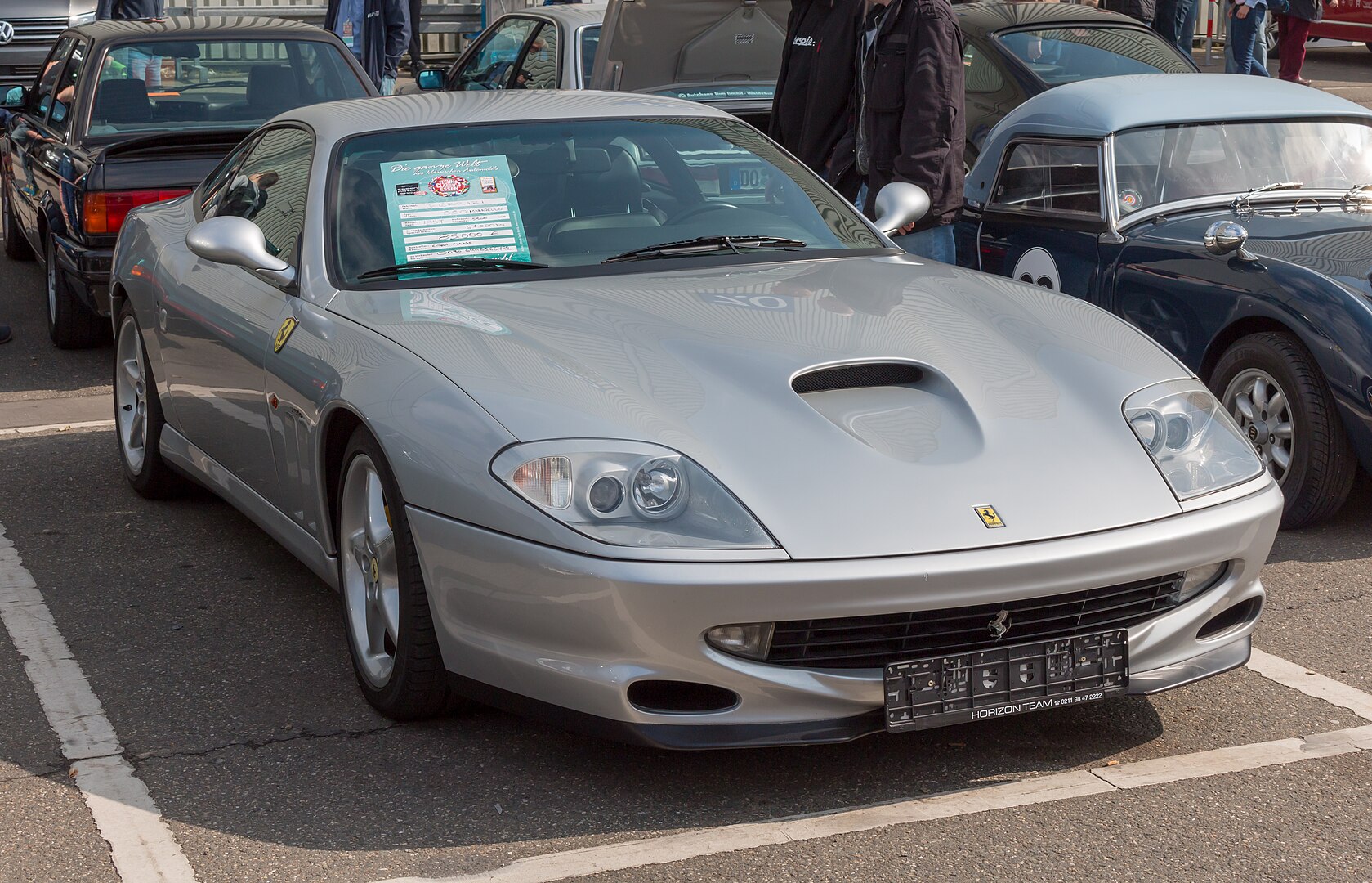 Matti Blume, CC BY-SA 4.0, Wikimedia Commons
Matti Blume, CC BY-SA 4.0, Wikimedia Commons
1995 Lamborghini Diablo SuperVeloce
Despite not releasing a new model in the 1990s, they did release a heavily-updated version of the Diablo: the SuperVeloce or SV. This meant an increase in power—to 510 hp—an adjustable rear spoiler, larger brakes, and larger wheels. The SuperVeloce was widely featured in the Need For Speed video game series of the mid-1990s.
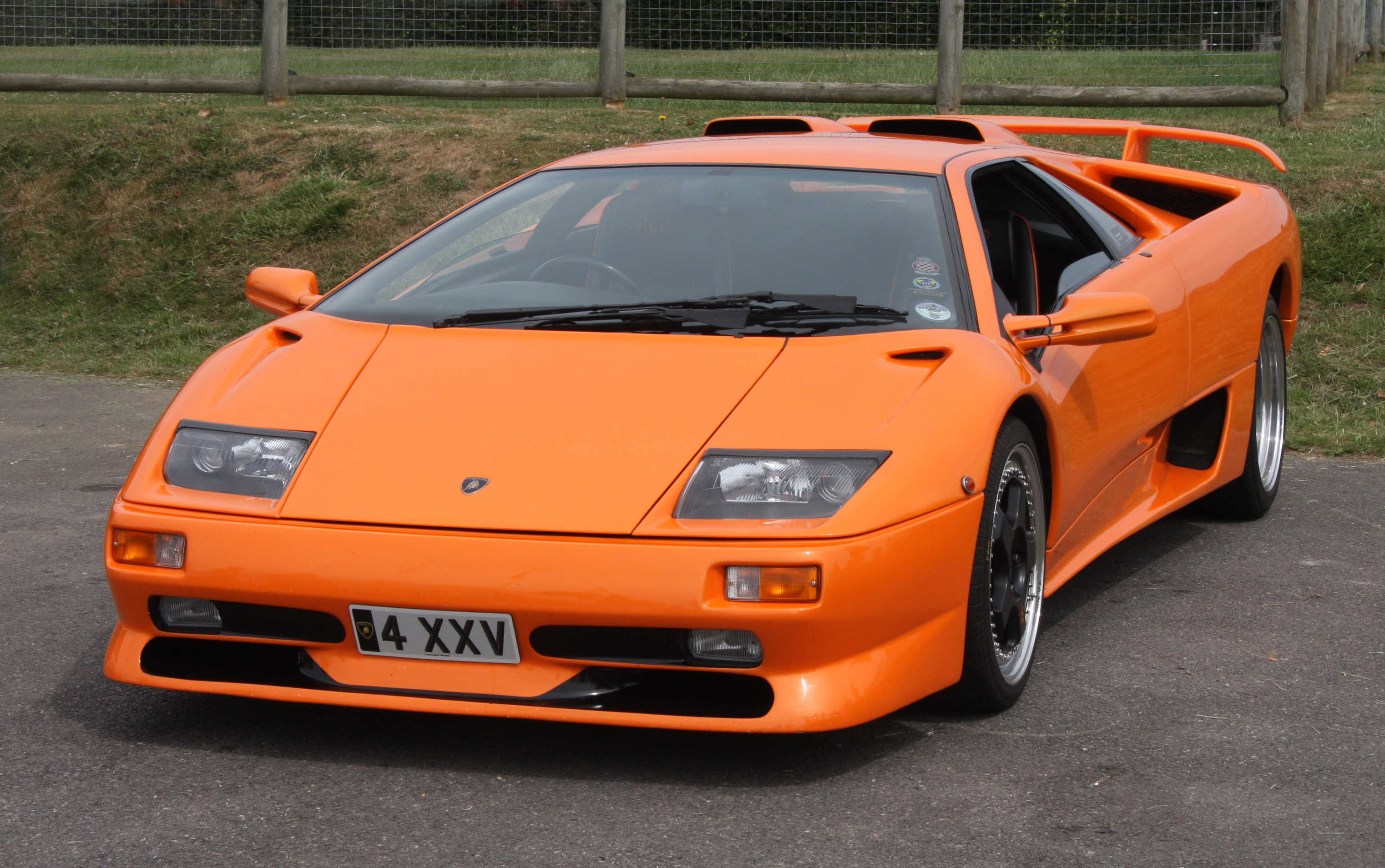 Brian Snelson, CC BY 2.0, Wikimedia Commons
Brian Snelson, CC BY 2.0, Wikimedia Commons
Why Were There So Few New Lamborghinis In The 1990s?
You may notice that there weren't that many Lamborghinis produced in the 1990s. This is because they were going through something of an ownership crisis and hard times financially. Although the Diablo saved the company from going bankrupt, a change of ownership again in the mid-decade meant little room for innovation.
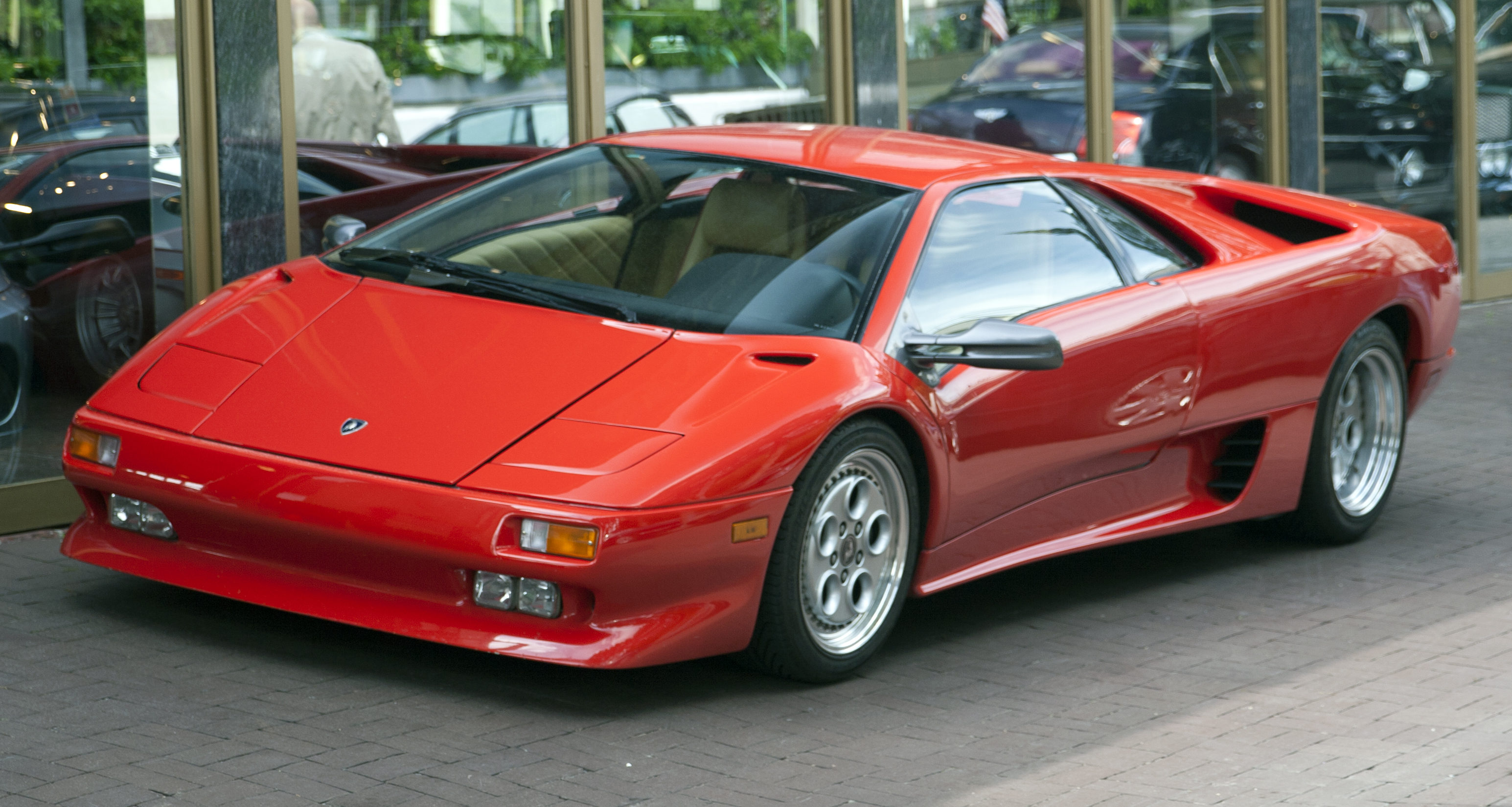 Mr.choppers, CC BY-SA 3.0, Wikimedia Commons
Mr.choppers, CC BY-SA 3.0, Wikimedia Commons
The Best Of The 2000s
As the new millennium dawned, things were looking good for Ferrari and much better for Lamborghini. Its ownership had been solidified and the company was back to making cars again. Let's go over some of the best cars of the 2000s.
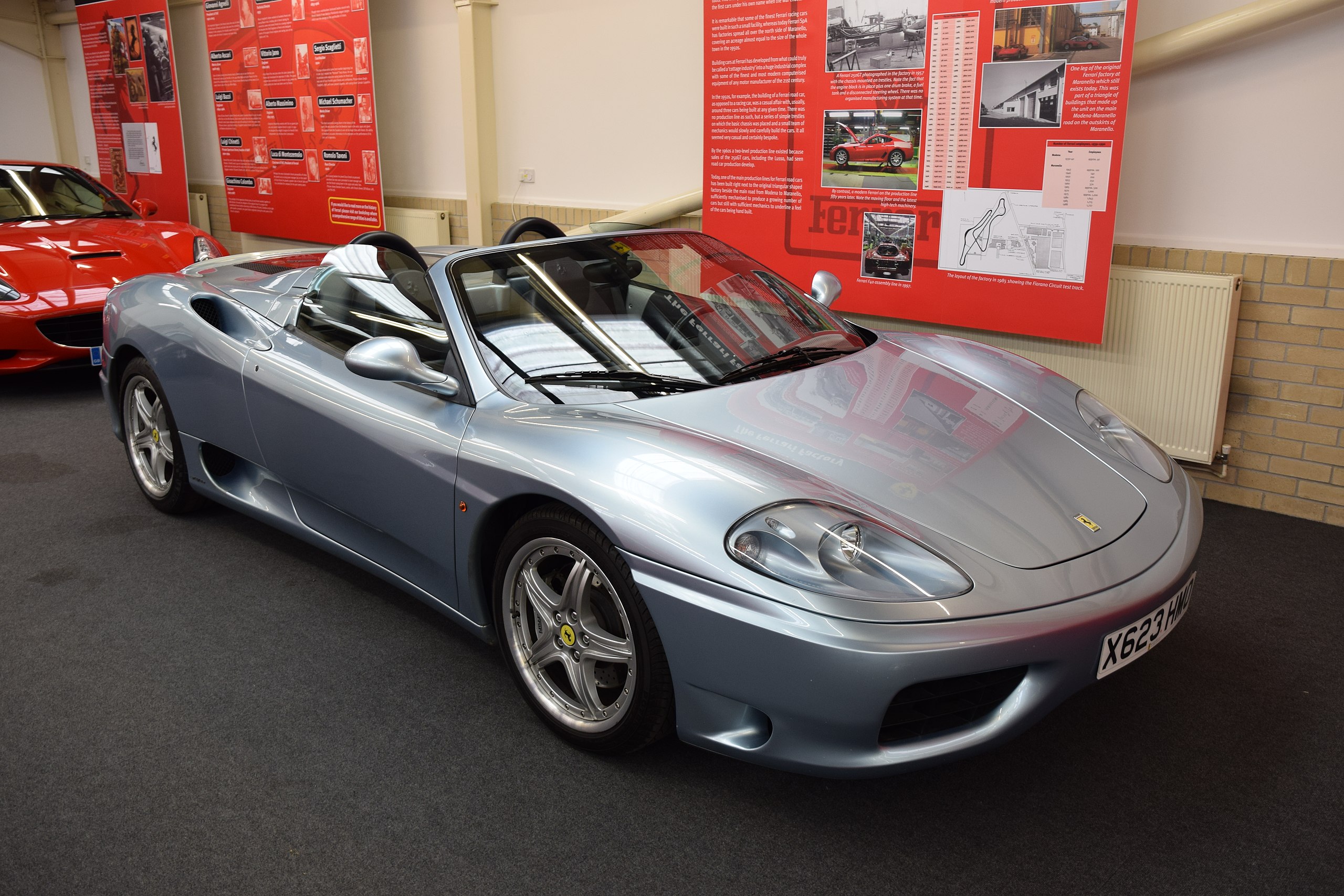 Hugh Llewelyn, CC BY-SA 2.0, Wikimedia Commons
Hugh Llewelyn, CC BY-SA 2.0, Wikimedia Commons
2001 Lamborghini Murcielago
In 2001, Lamborghini released the Murcielago—their first production car since 1995—following the company's acquisition by Audi. The Murcielago was a two-door coupé and it was stunning. With scissor doors, a vibrant yellow color offering, an updated 6.2L V12 engine that produced 573 hp and delivered a staggering top speed of 207 mph, it was a massive upgrade over the Diablo, which is exactly what Lamborghini needed.
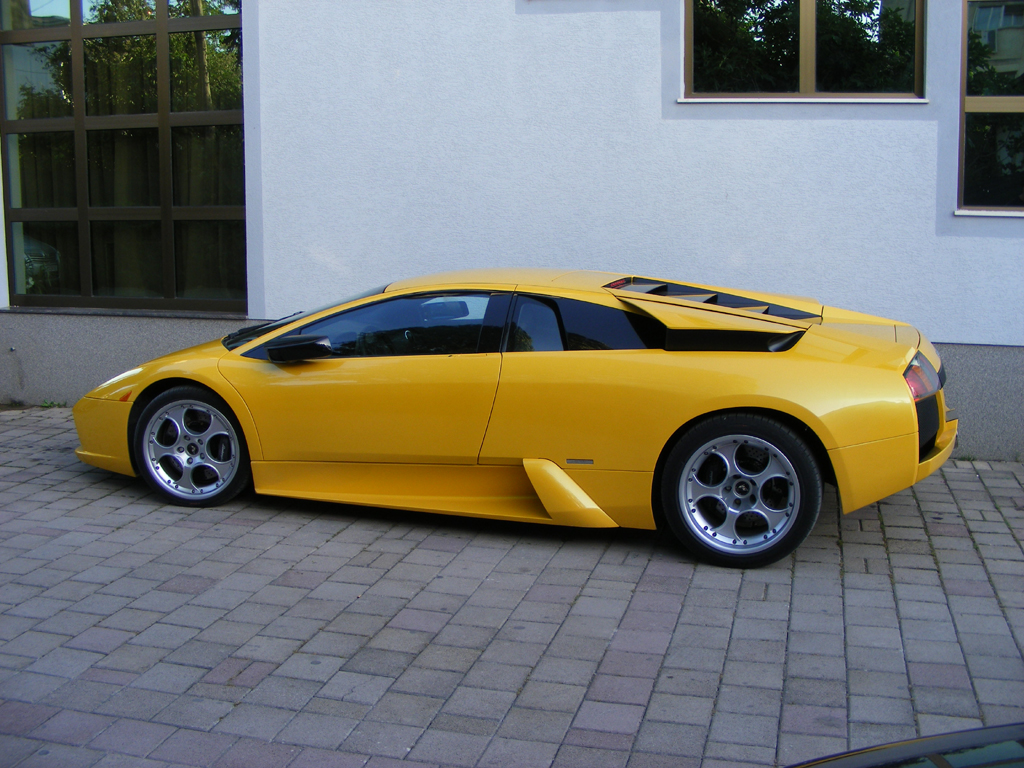 INkubusse, CC BY-SA 3.0, Wikimedia Commons
INkubusse, CC BY-SA 3.0, Wikimedia Commons
2002 Ferrari Enzo
In 2002, Ferrari released an interesting-looking new car named after their founder, Enzo Ferrari. Based on their F1 cars, the Enzo had a low nose, low-slung bodywork, and butterfly doors. Under the hood, it was fitted with an F1-inspired F140 V12 engine, giving out 651 hp and a top speed of 221 mph. The Enzo was Ferrari's answer to the Murcielago.
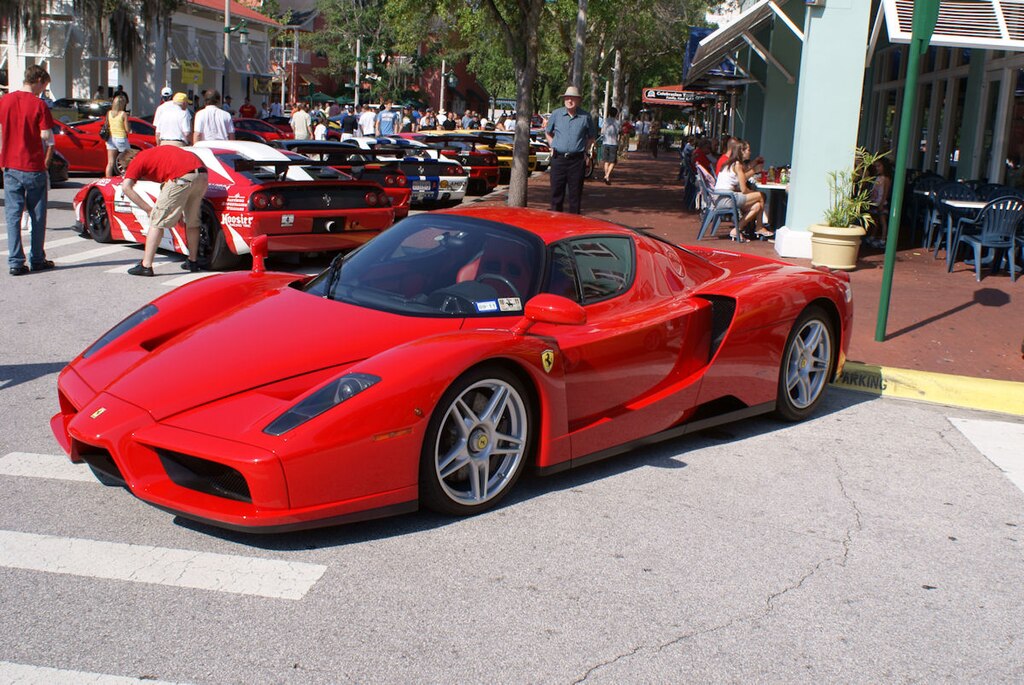 Valder137, CC BY 2.0, Wikimedia Commons
Valder137, CC BY 2.0, Wikimedia Commons
2003 Lamborghini Gallardo
A now-reinvigorated Lamborghini put out the Gallardo in 2003, beginning something of a tit-for-tat war with Ferrari to produce the best supercar. It was powered by a 5.0L V10 engine, putting out 493 hp and giving the new Lambo a top speed of 196 mph. It also came in a gorgeous yellow color, outshining Ferrari's typical red and black offerings.
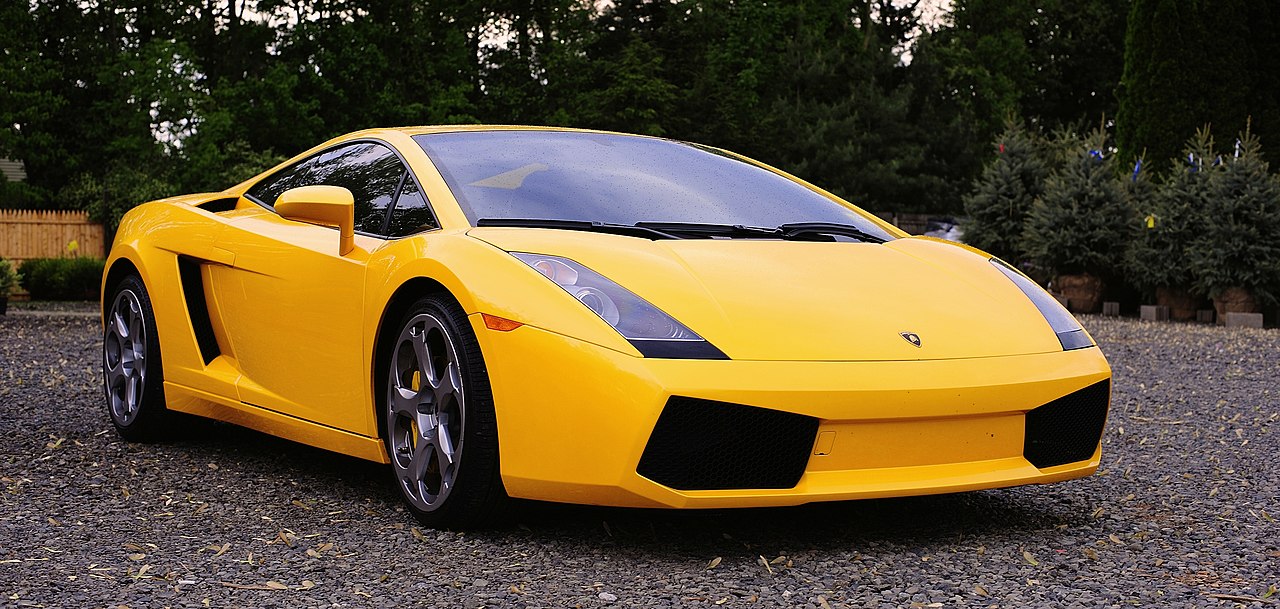 William Hoiles, CC BY 2.0, Wikimedia Commons
William Hoiles, CC BY 2.0, Wikimedia Commons
2005 Ferrari F430
As a response to the Gallardo, Ferrari released one of their most popular road cars ever—the F430, owned by many celebrities throughout its production life, which ended in 2009. Selling 16,750 units, it was powered by a 4.3L V8 engine that produced 483 hp and rocketed the F430 to a top speed of 196 mph, taking it from 0 to 60 in 3.6 seconds.
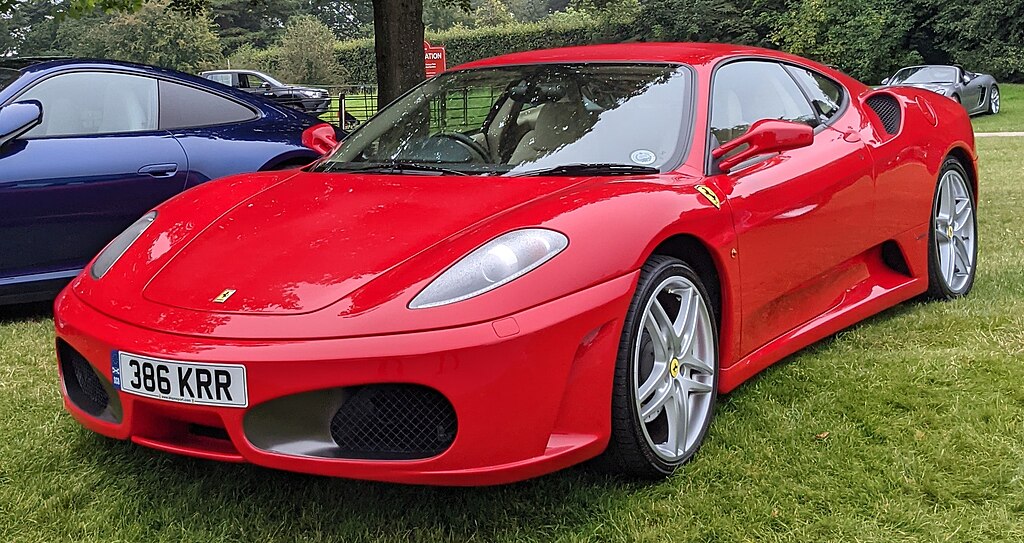 Calreyn88, CC BY-SA 4.0, Wikimedia Commons
Calreyn88, CC BY-SA 4.0, Wikimedia Commons
Which Would You Rather Own?
Which of these stunning sports cars would you rather own? Let us know if you're Team Ferrari or Team Lambo in the comments below!
You May Also Like:
A Look Back At The 1957 Ferrari GT California Spyder
The Top Ten Best-Selling Cars Ever
Inside James Hetfield's Rockin' Car Collection
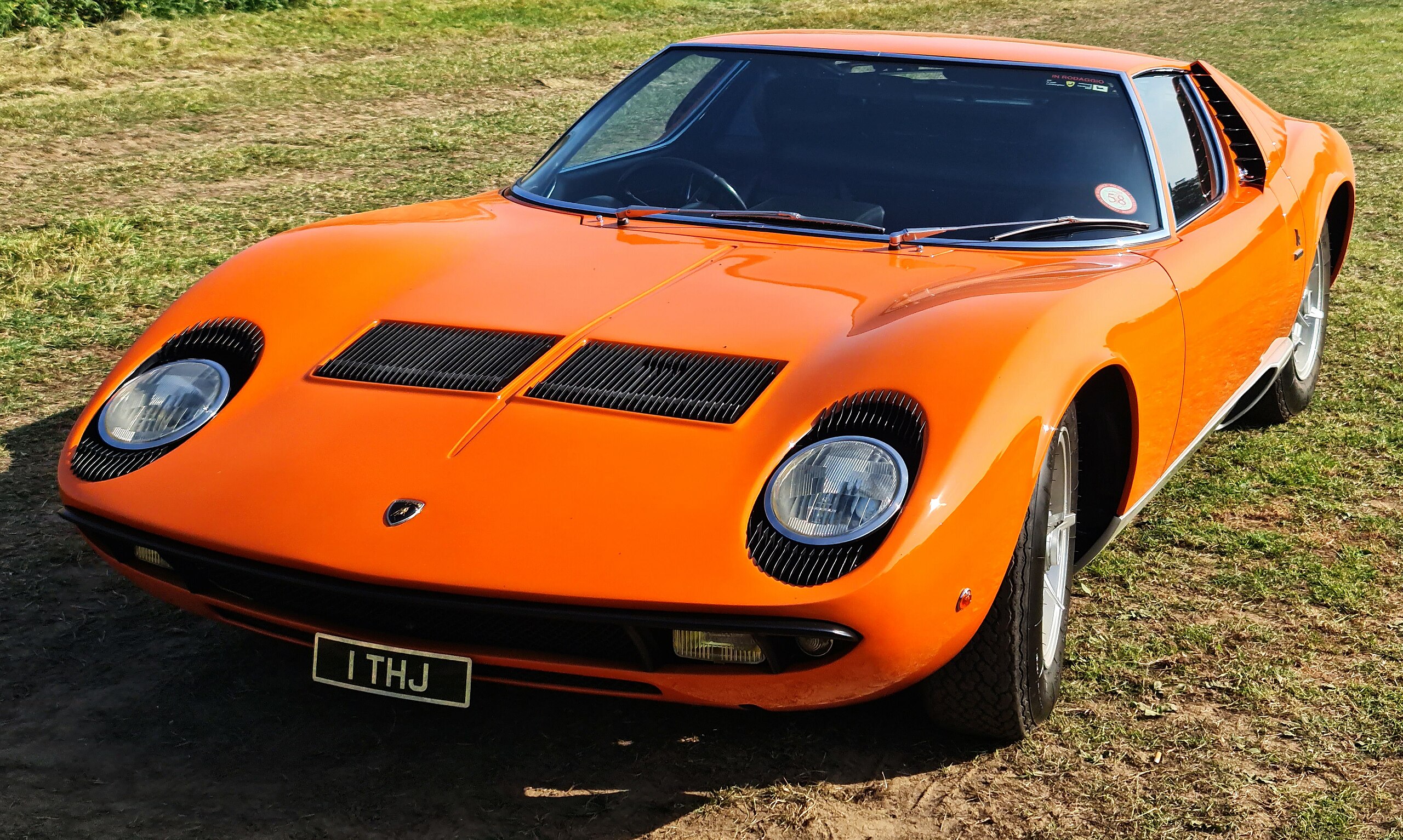 MrWalkr, CC BY-SA 4.0, Wikimedia Commons
MrWalkr, CC BY-SA 4.0, Wikimedia Commons
Sources:


